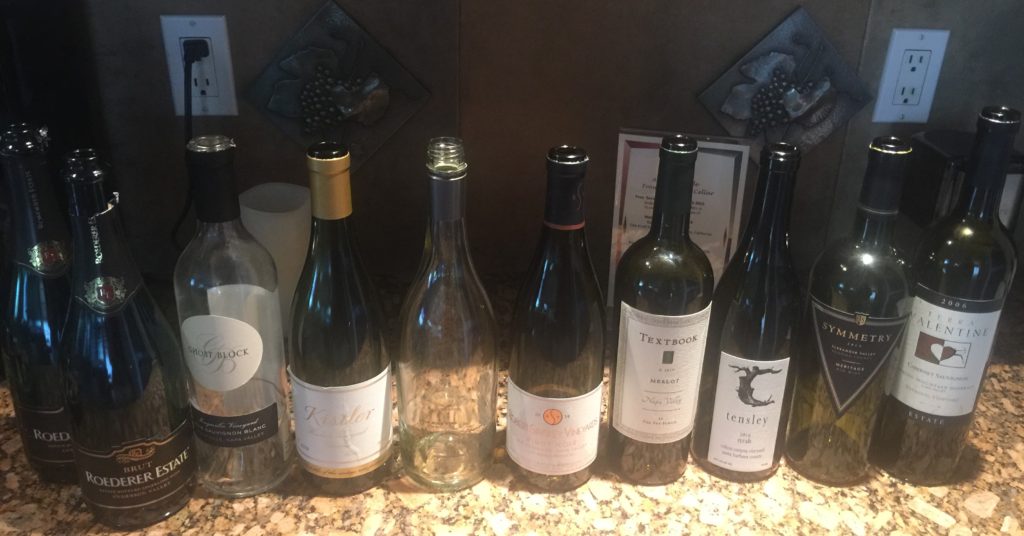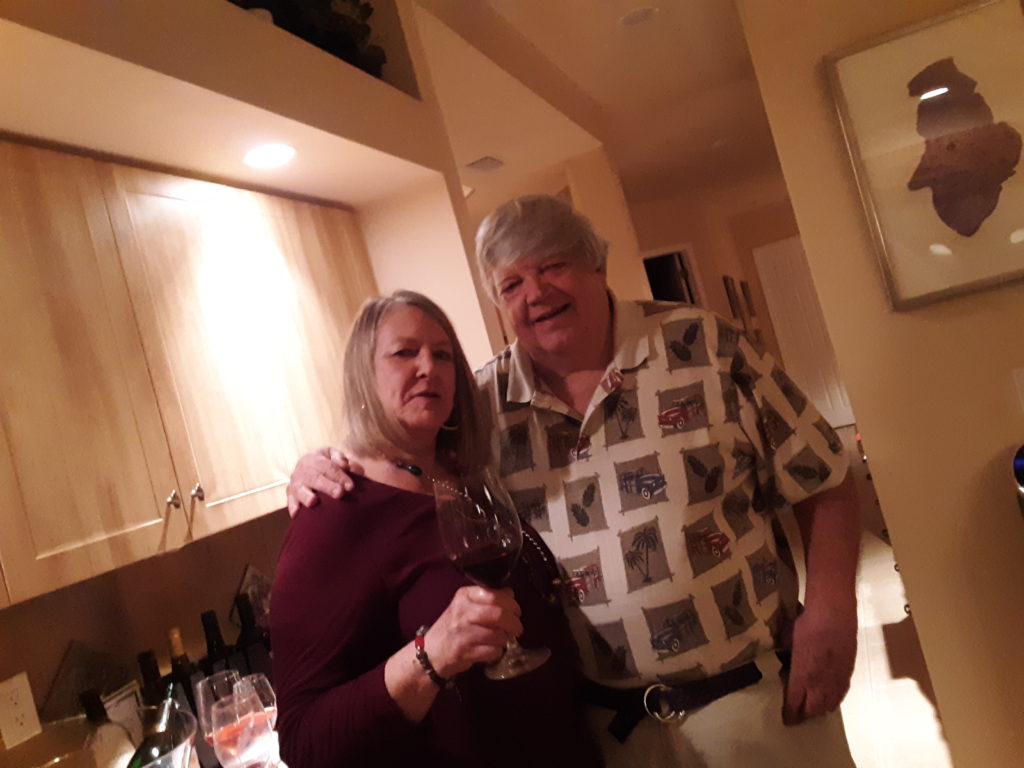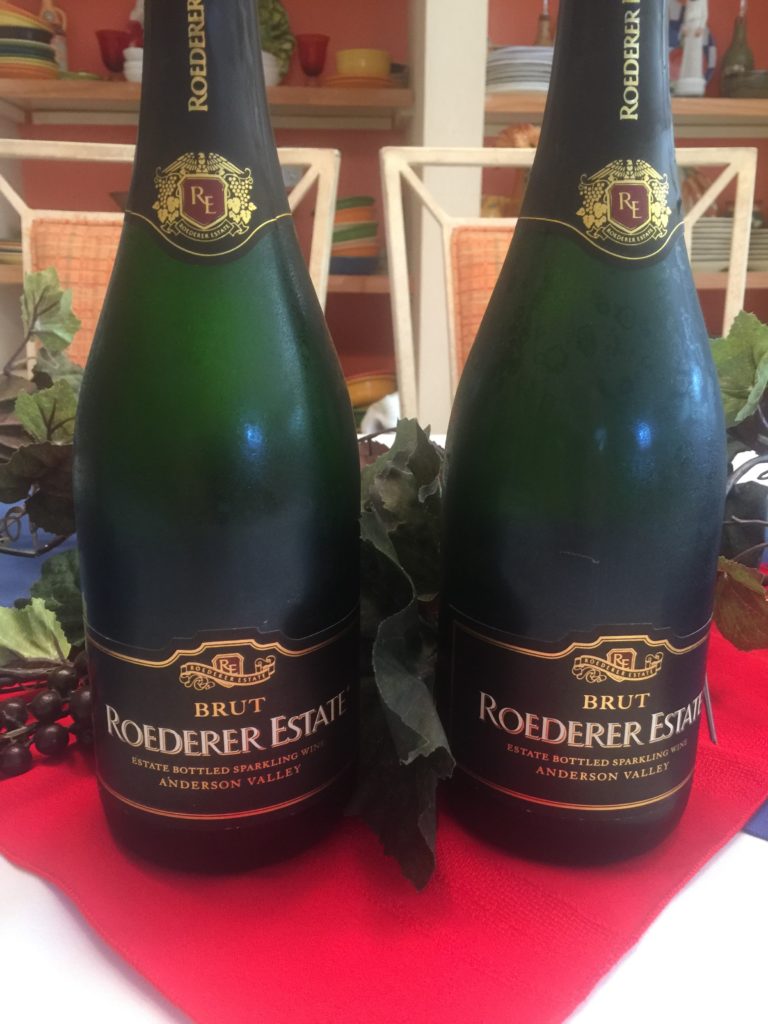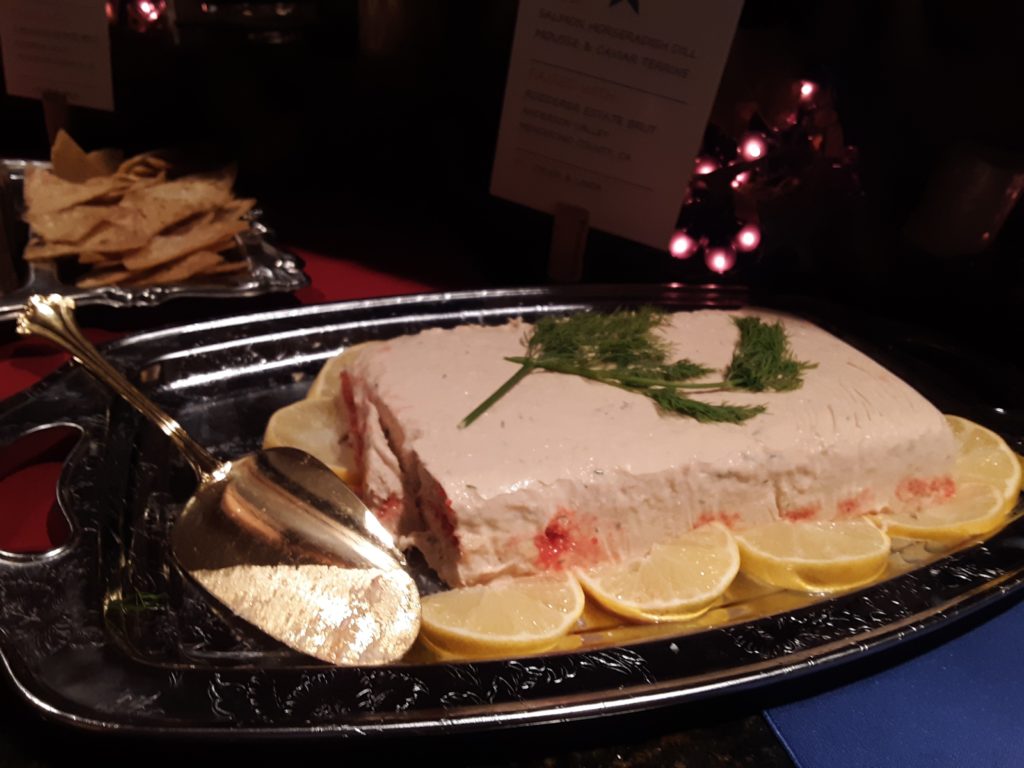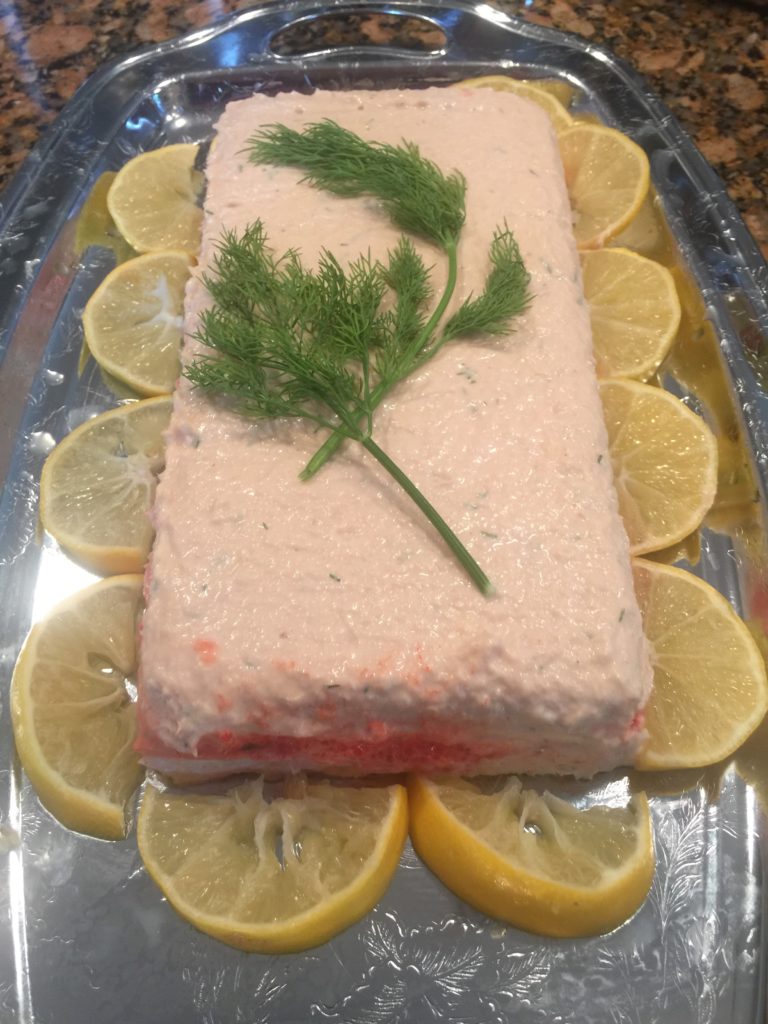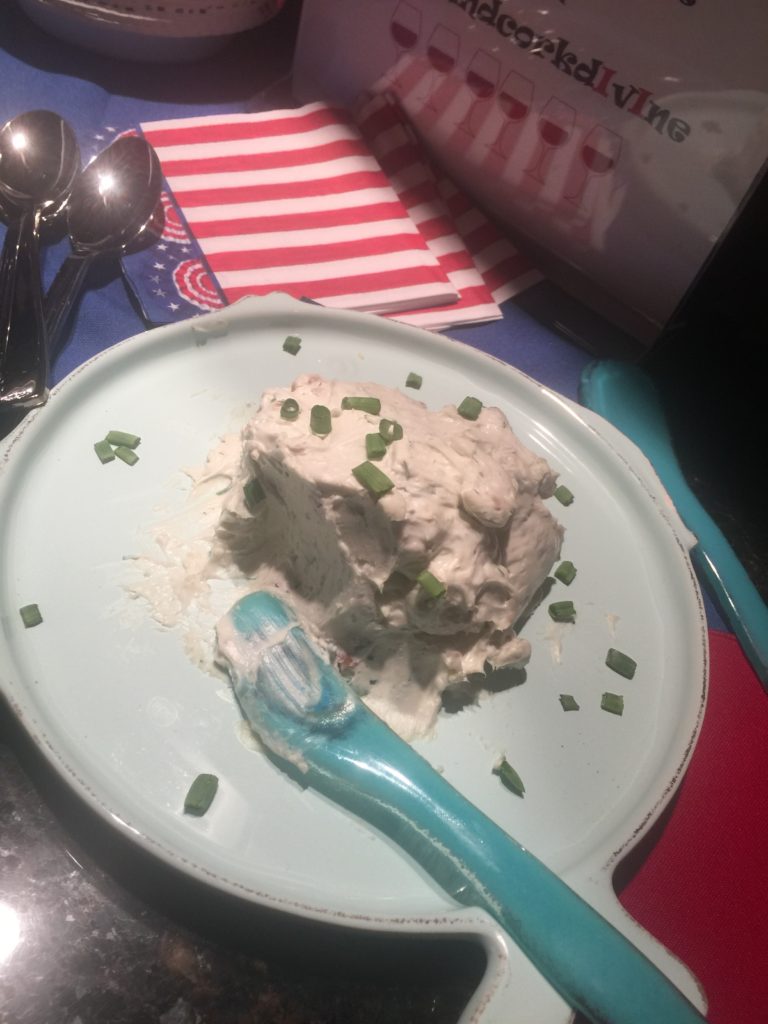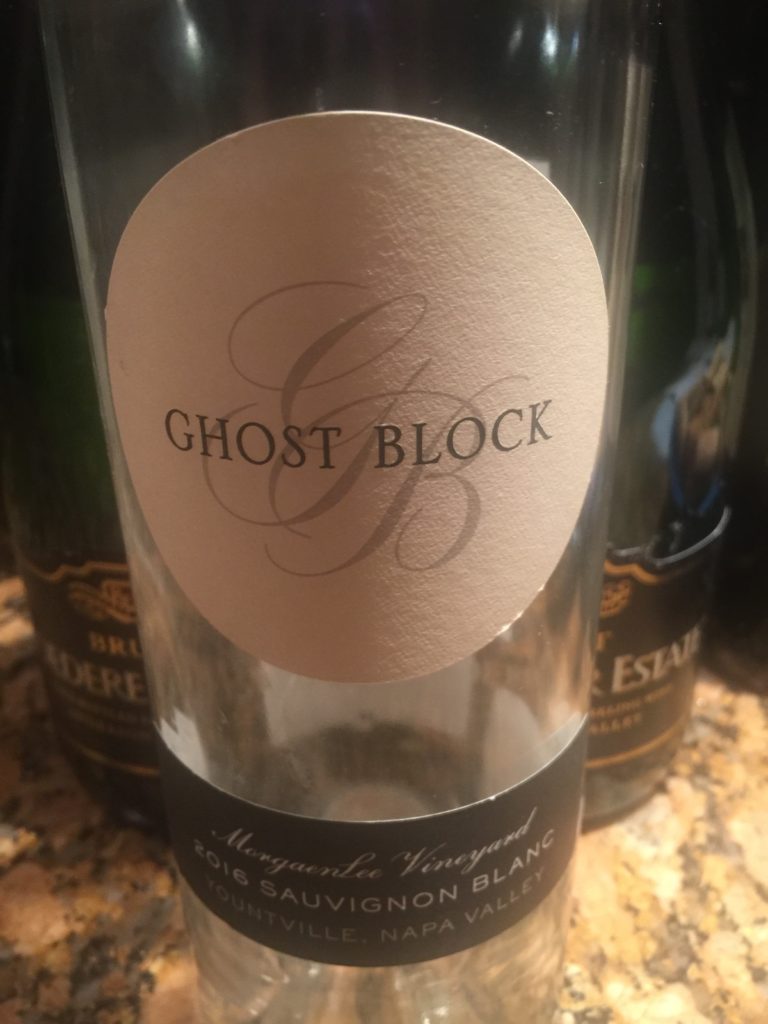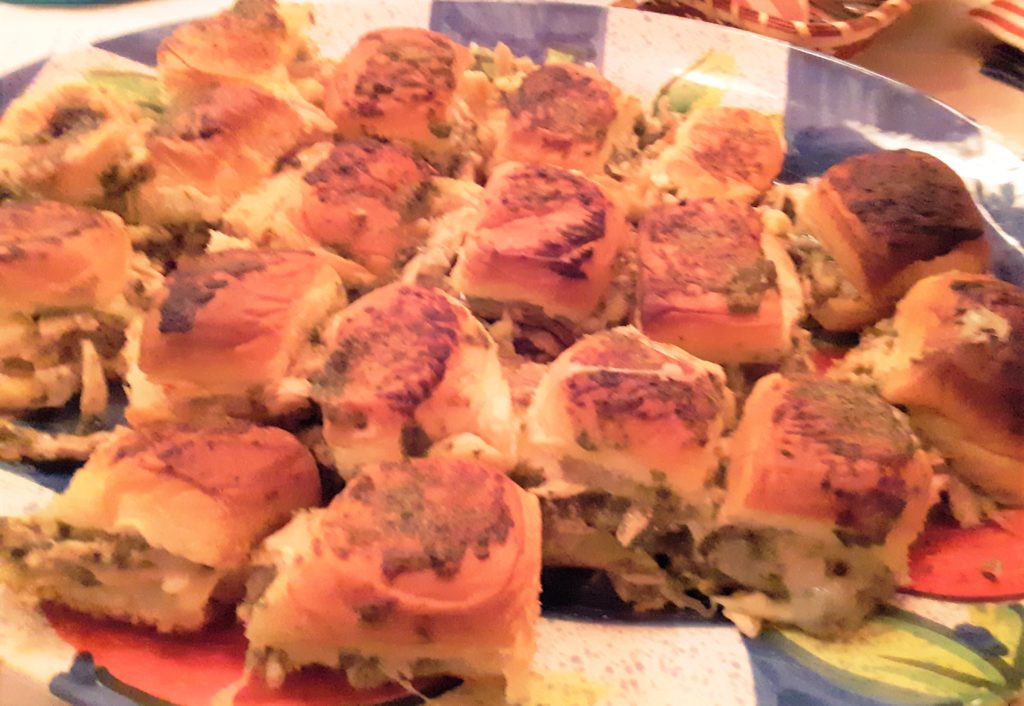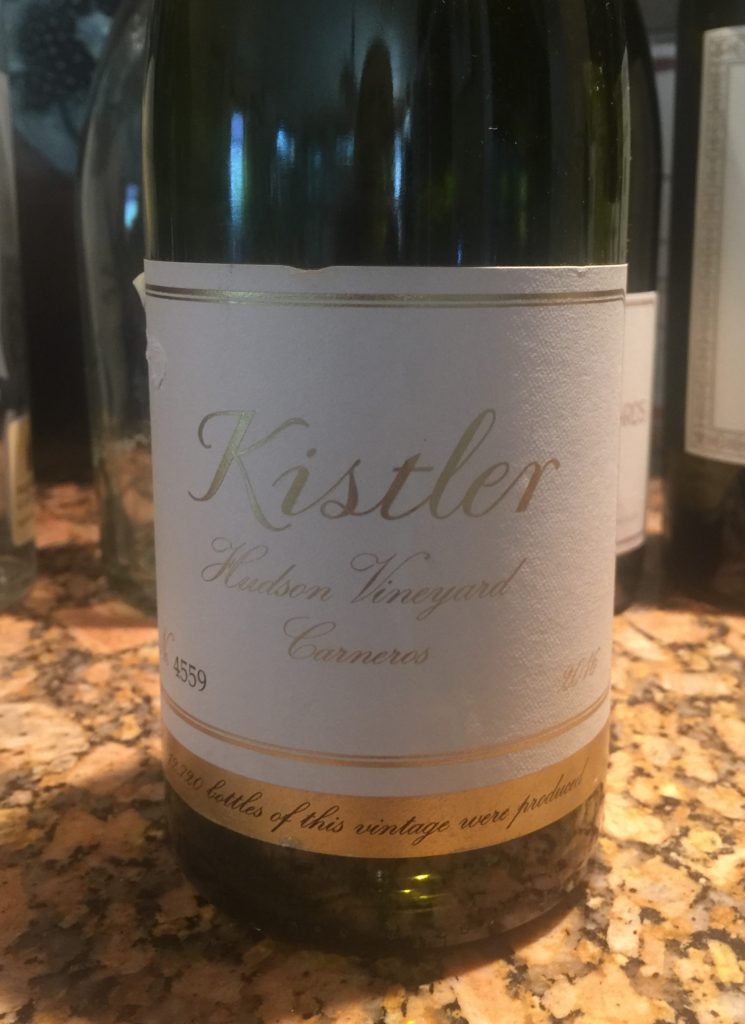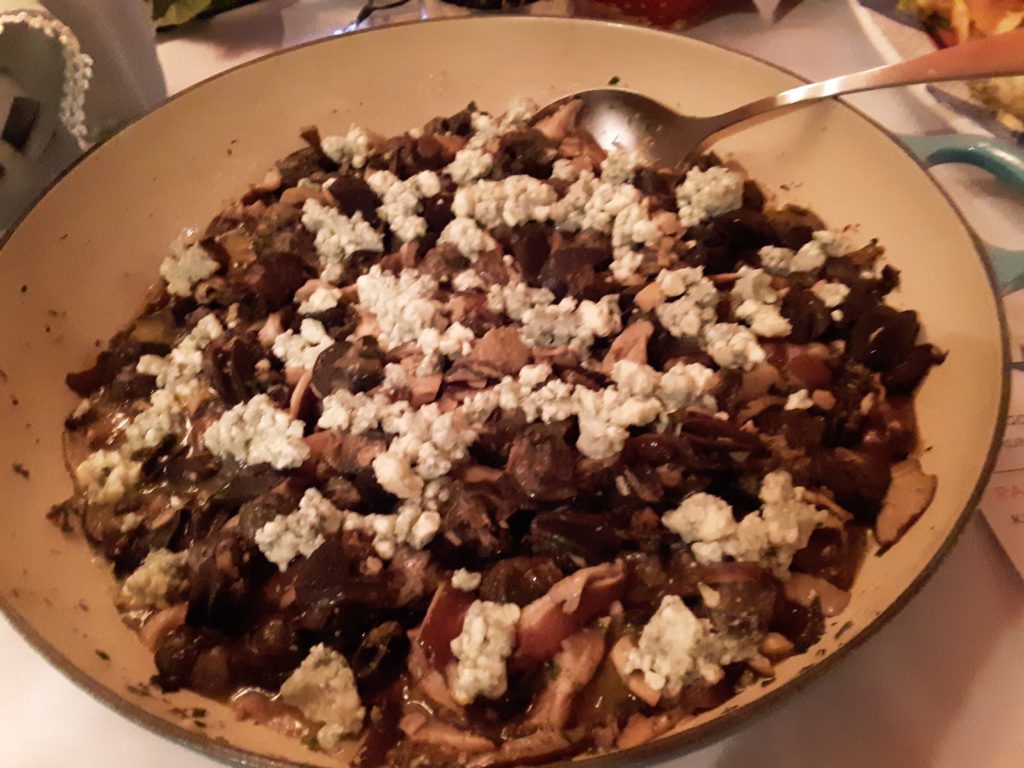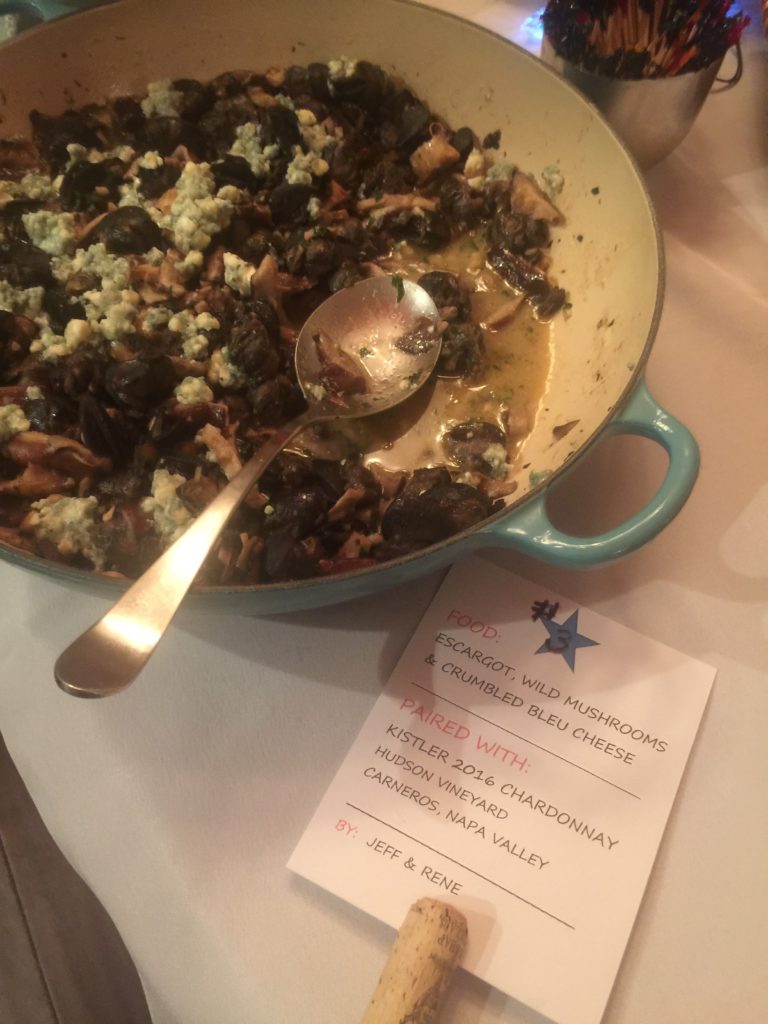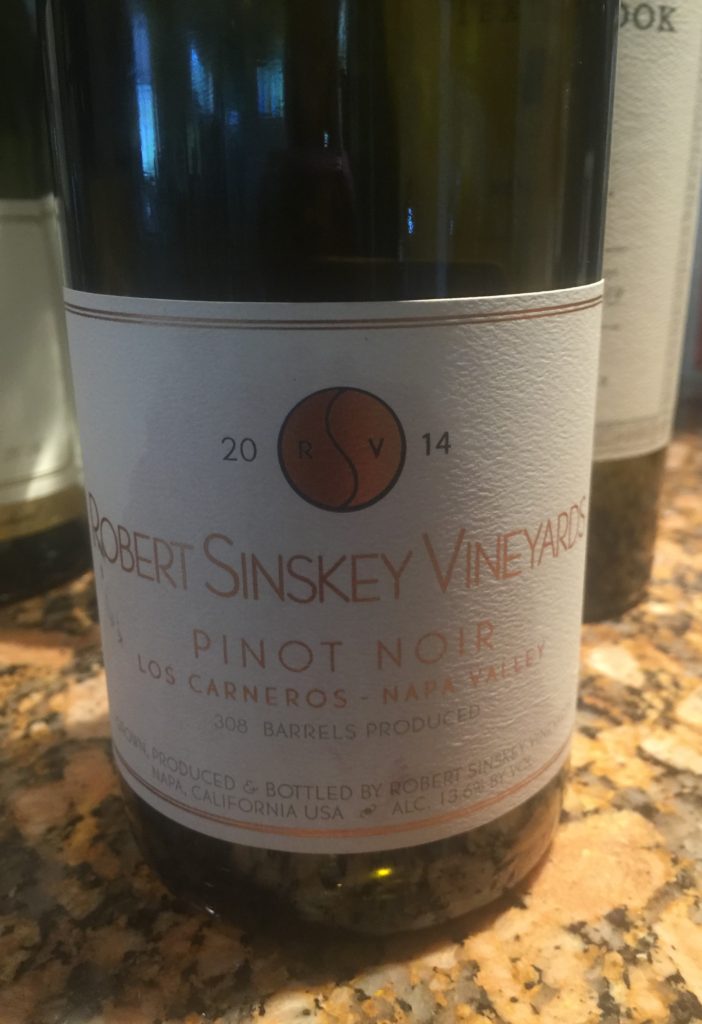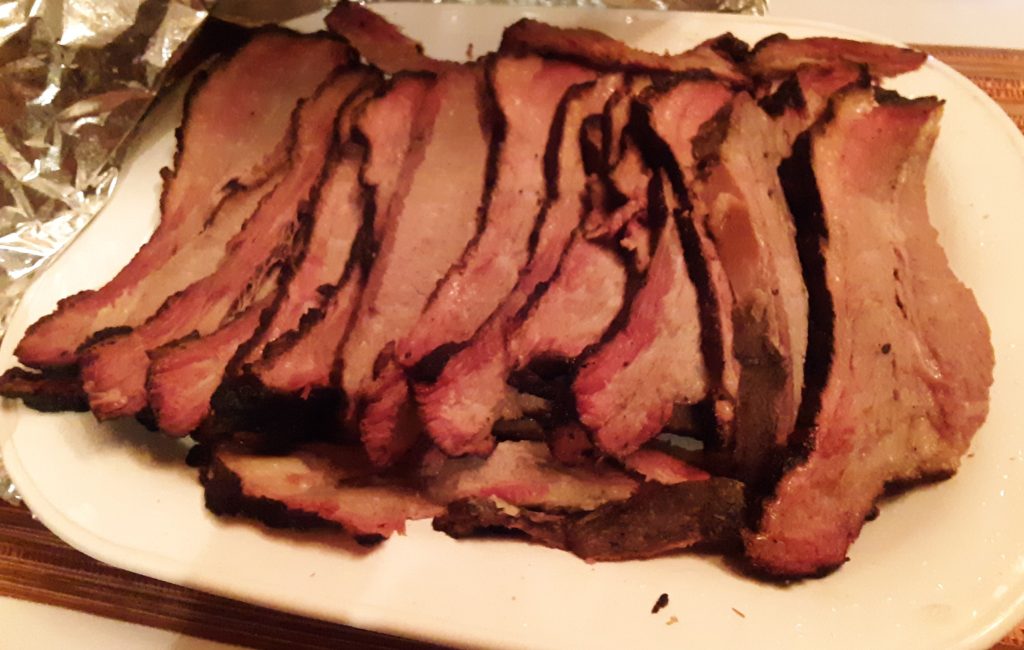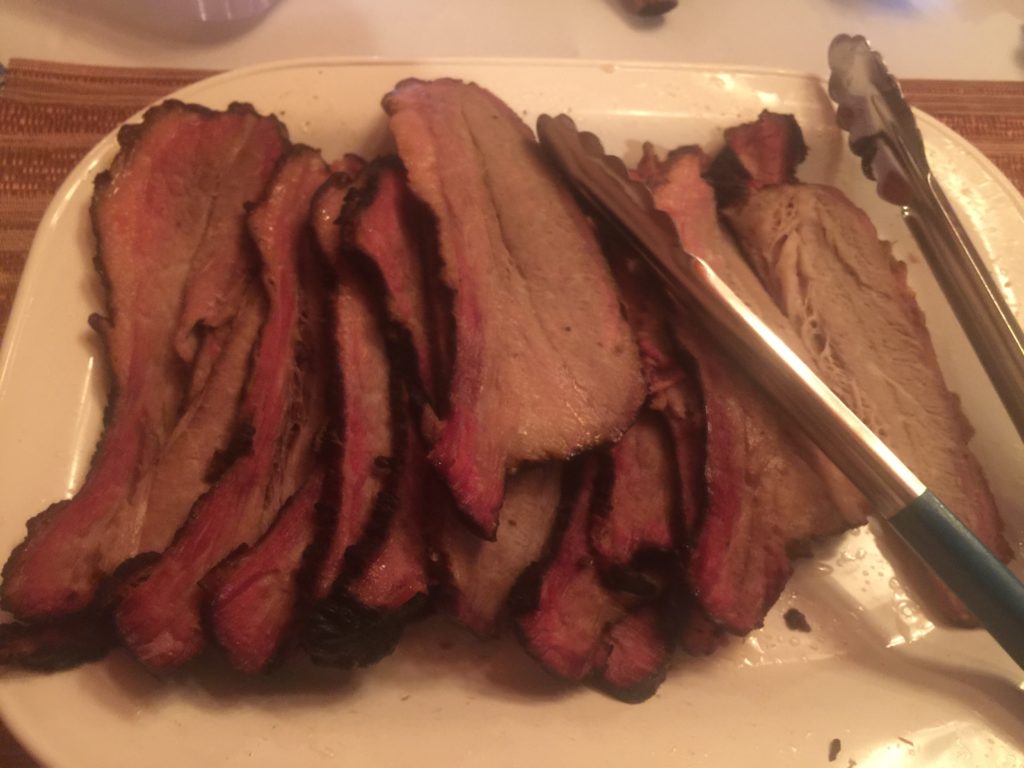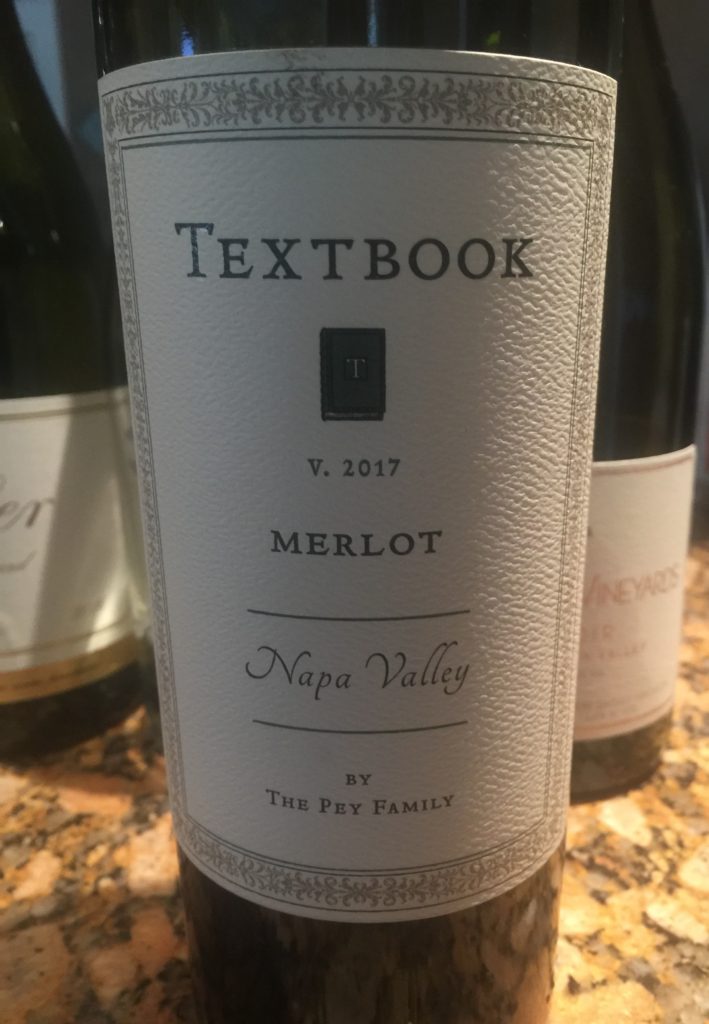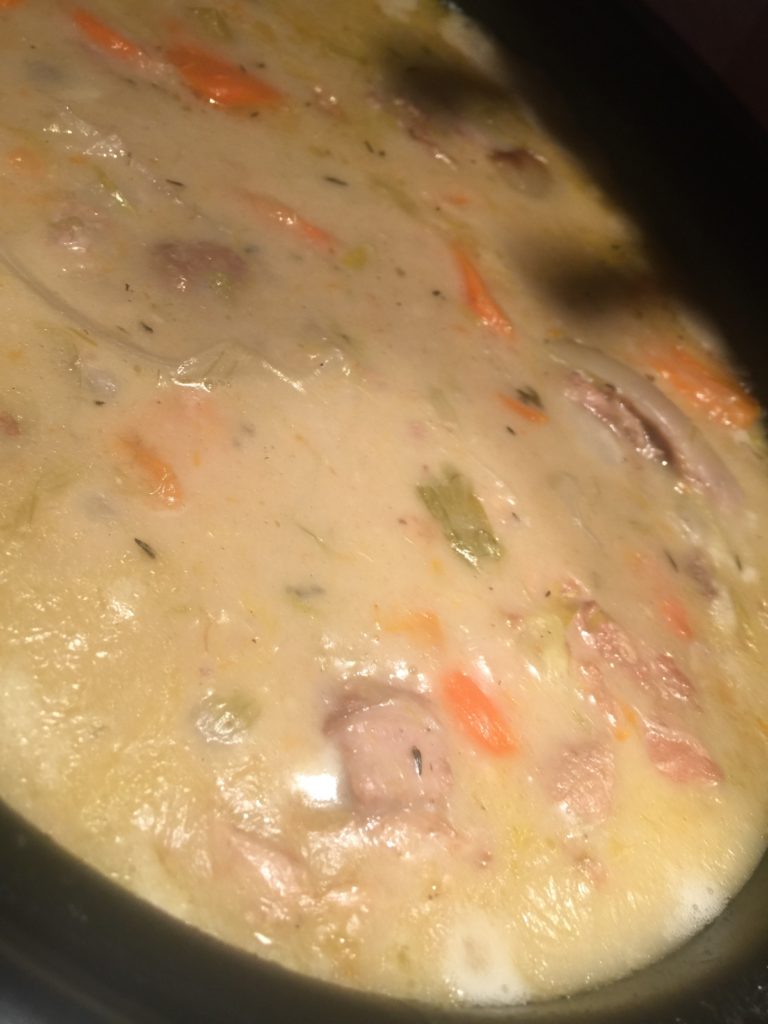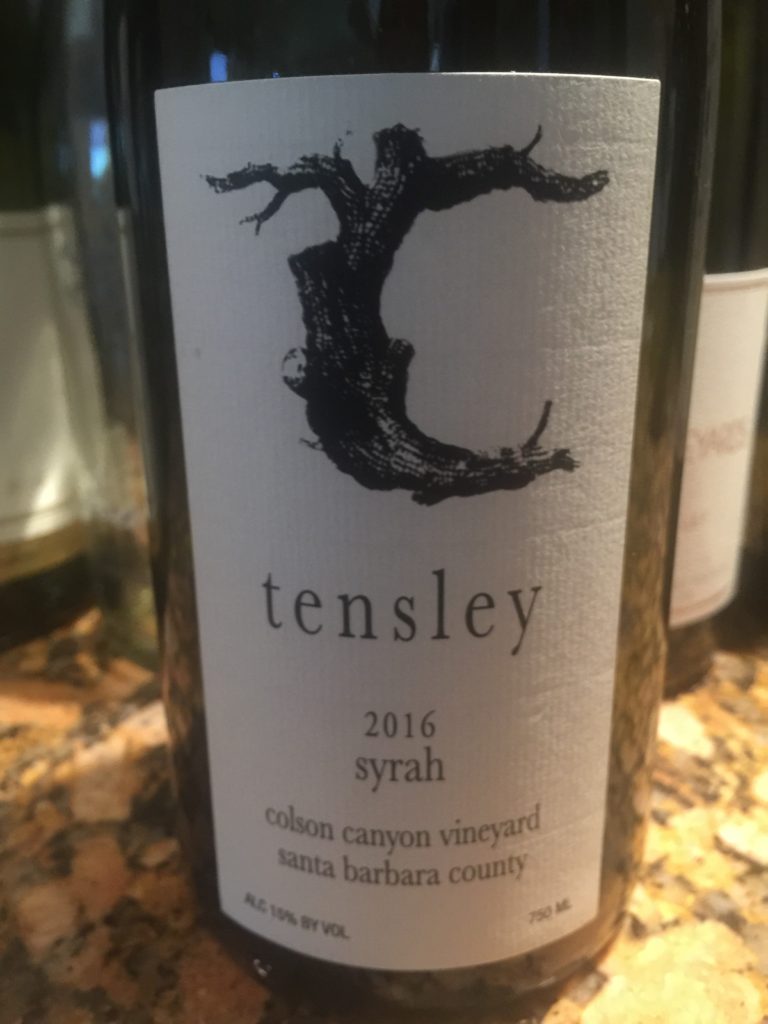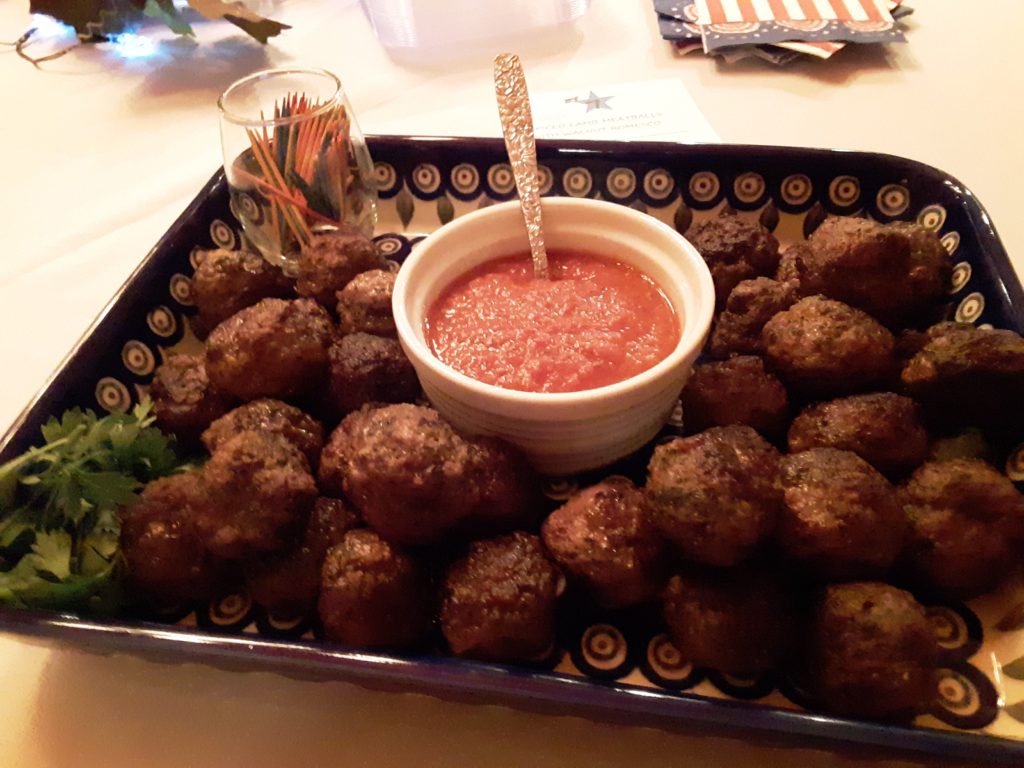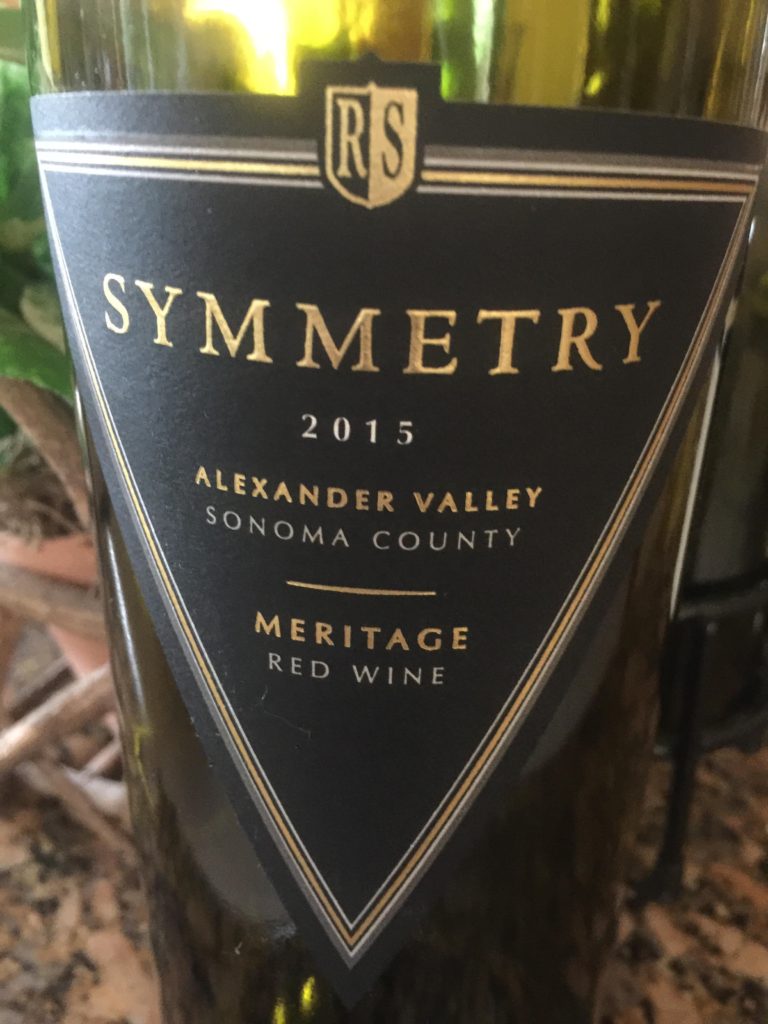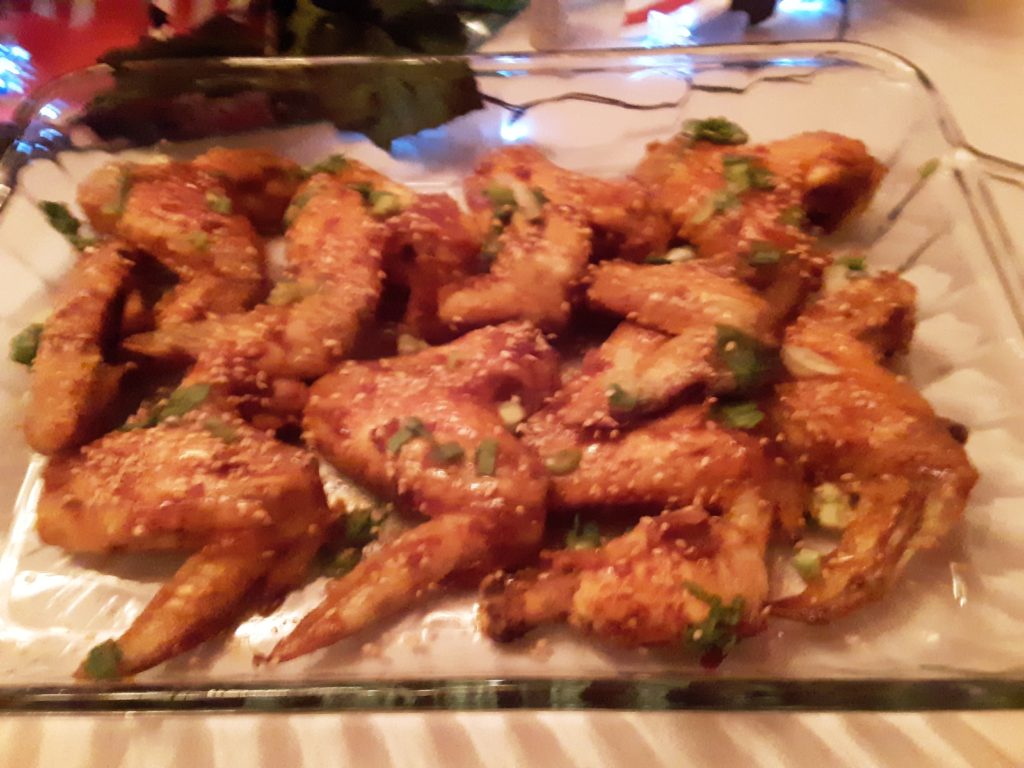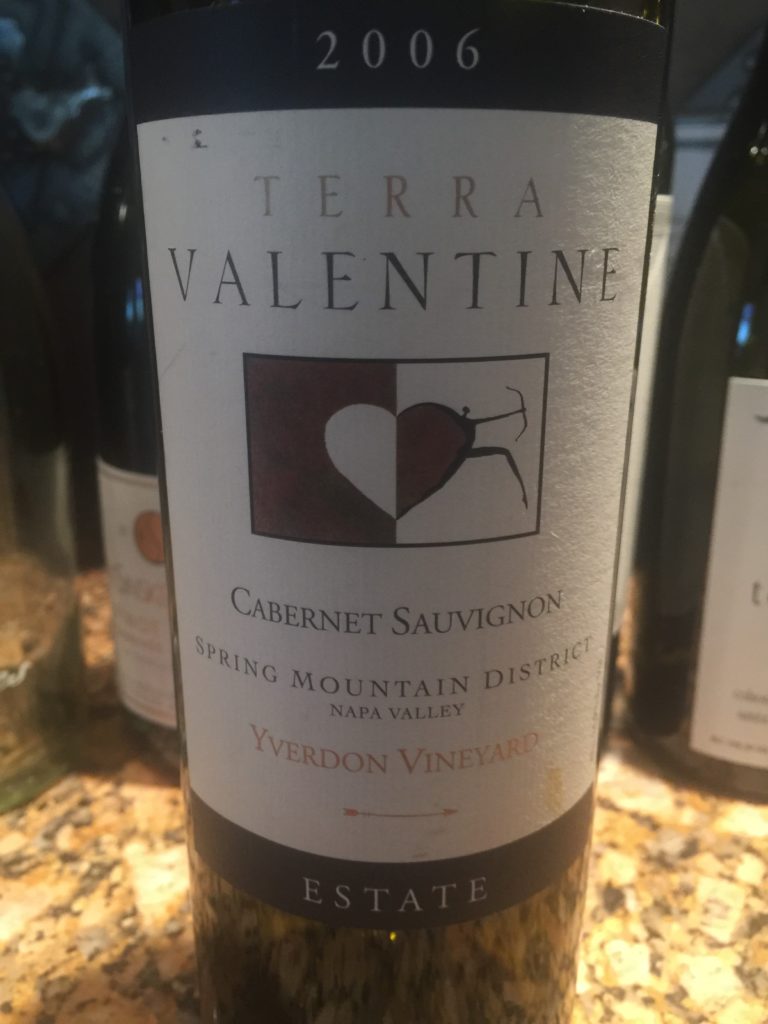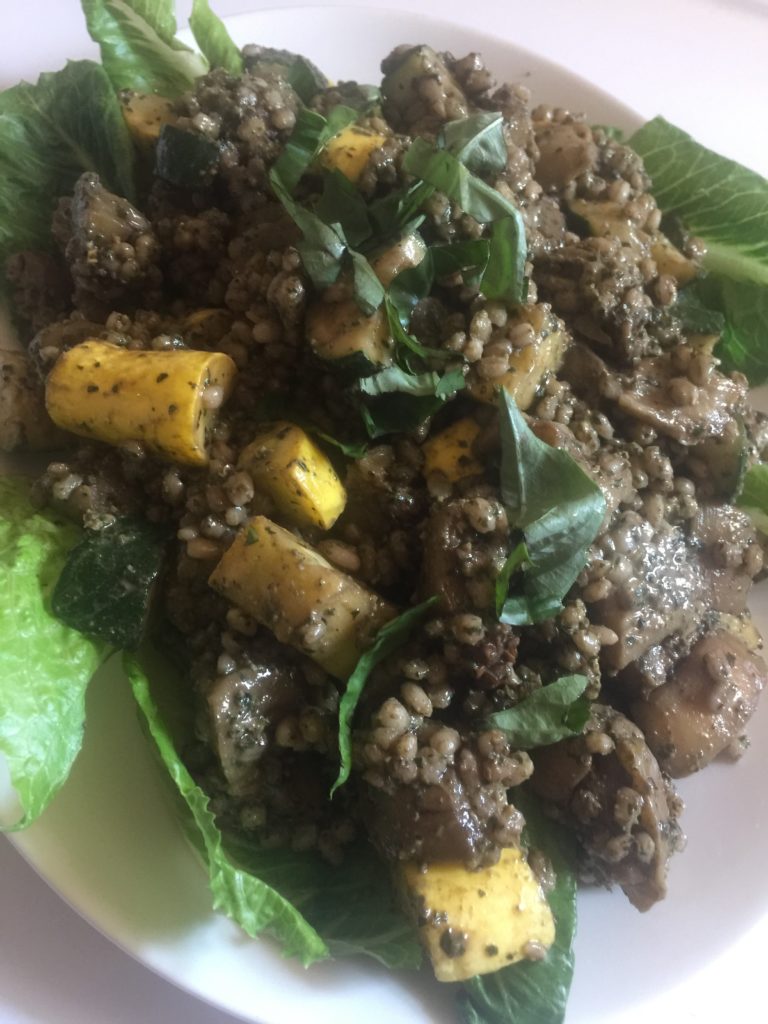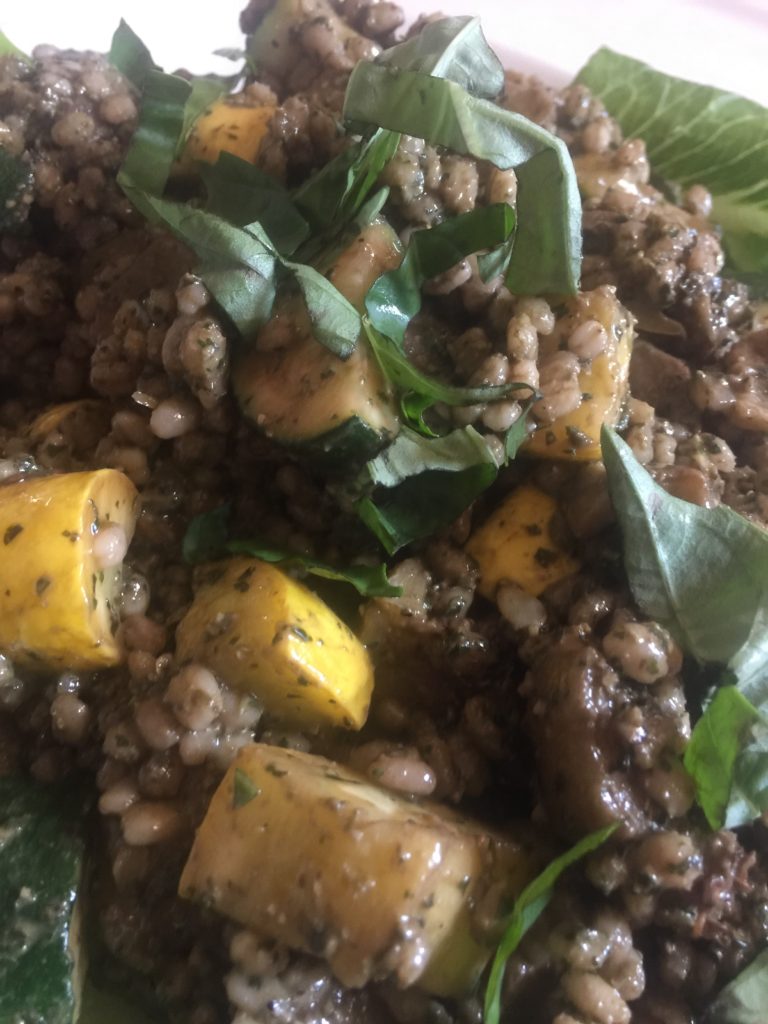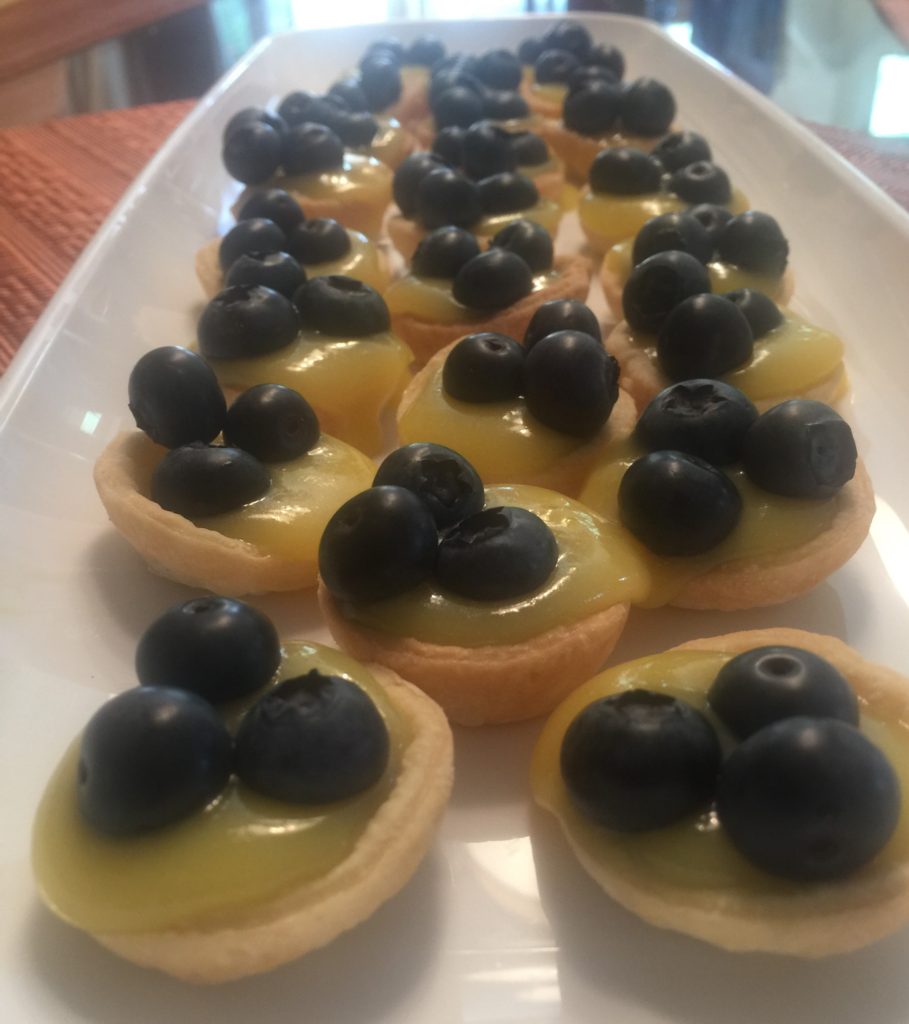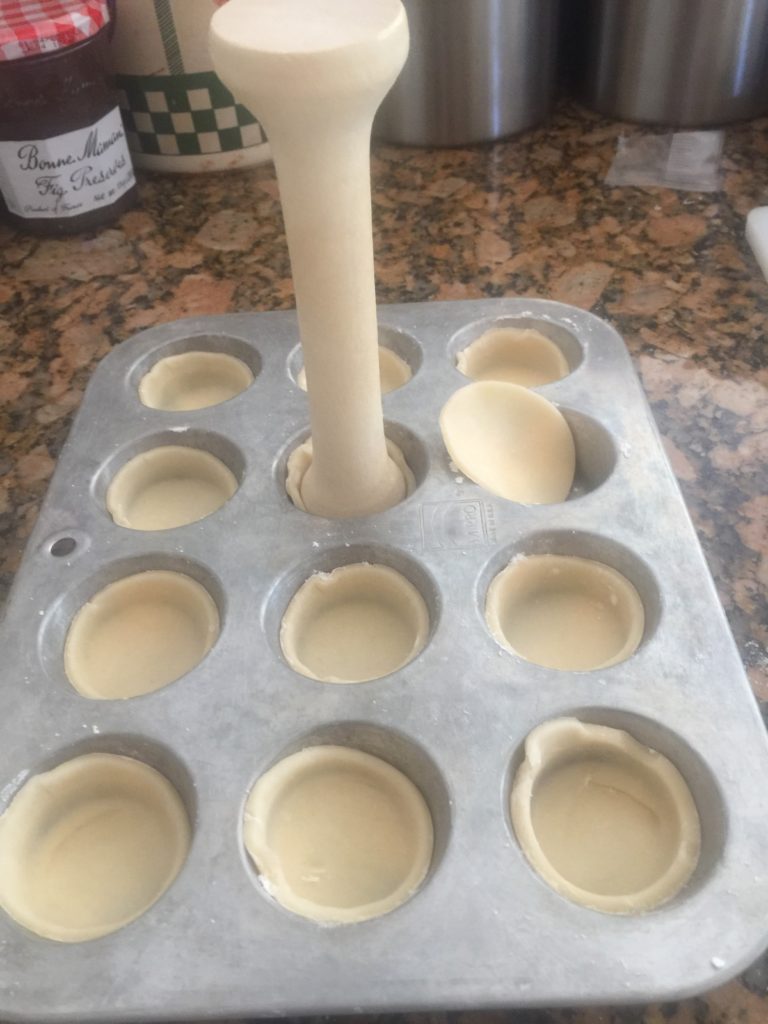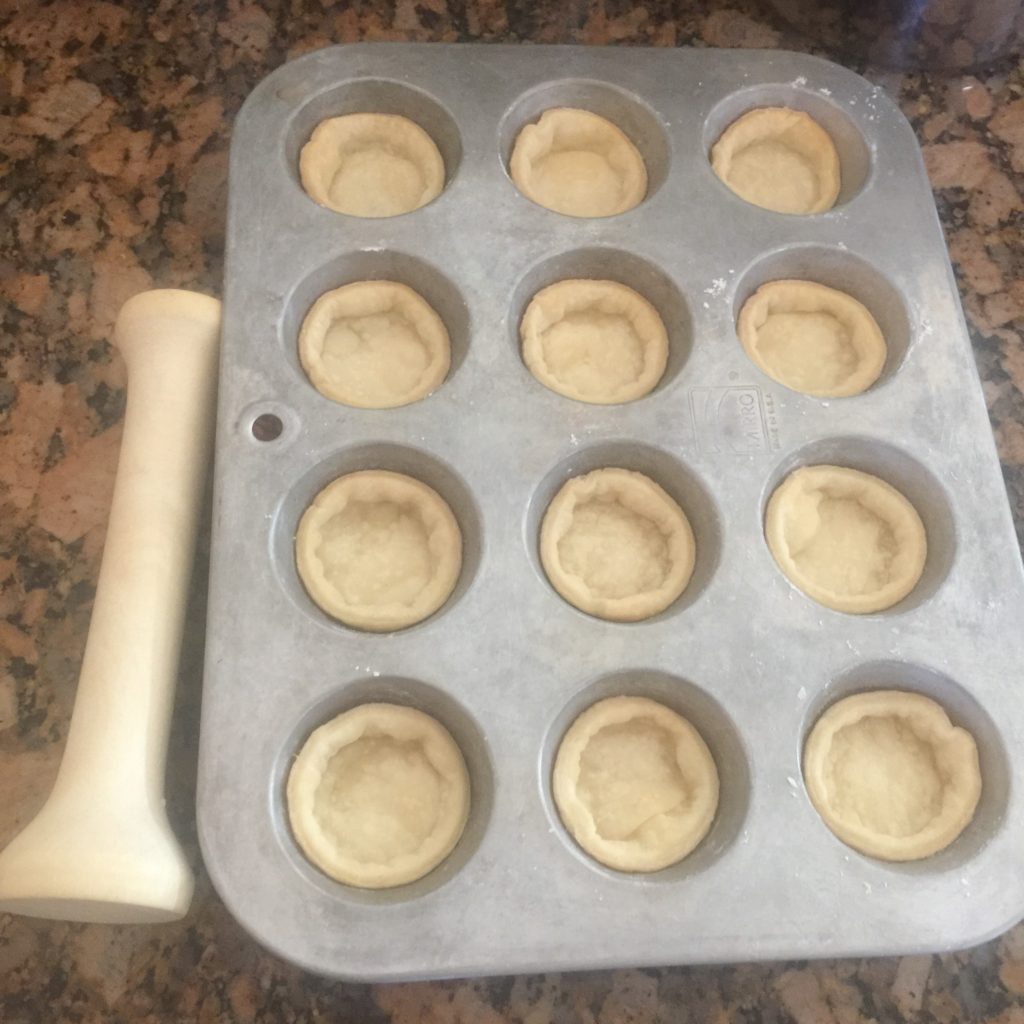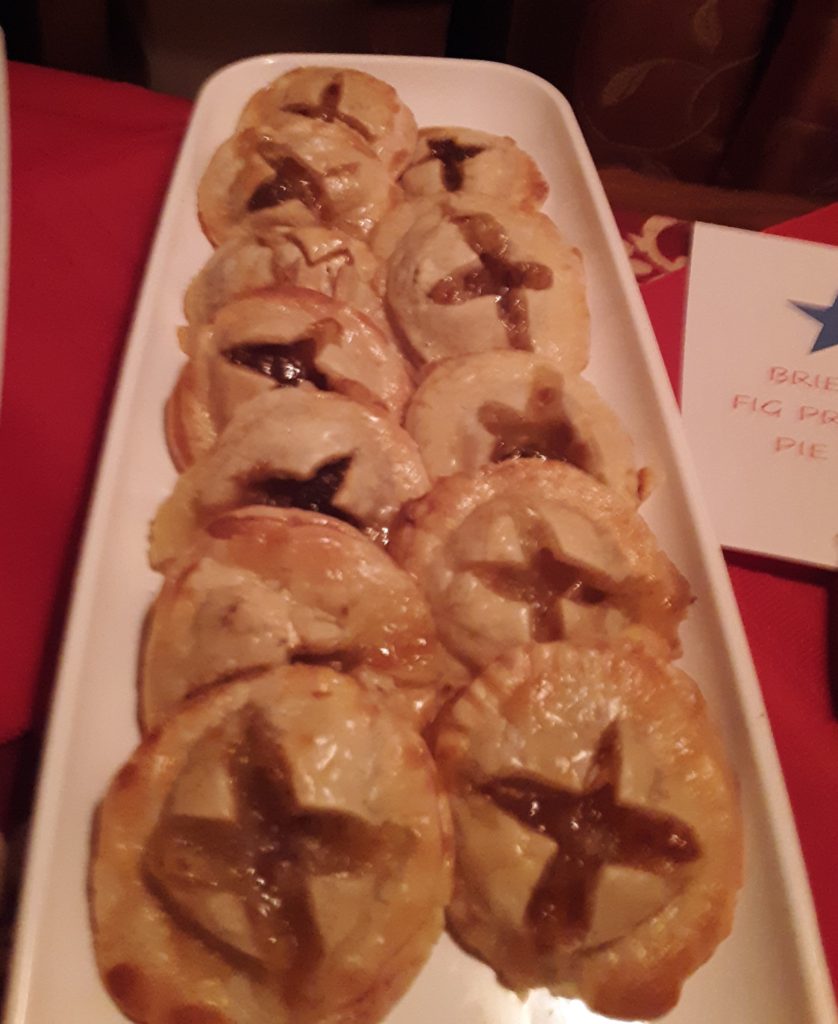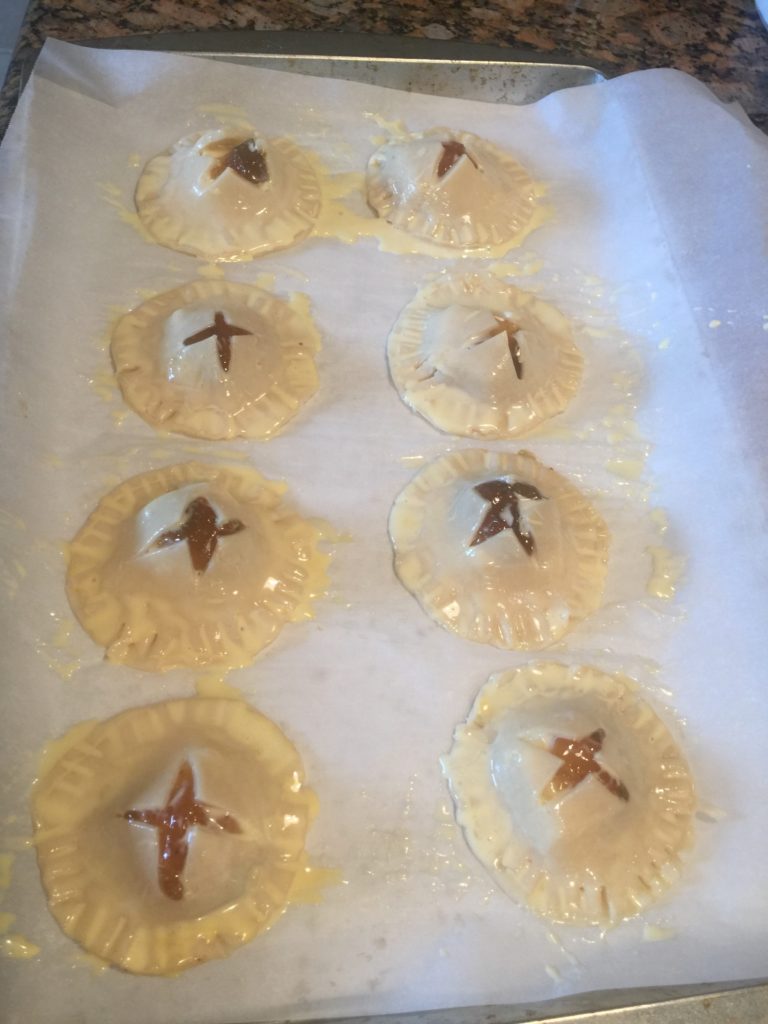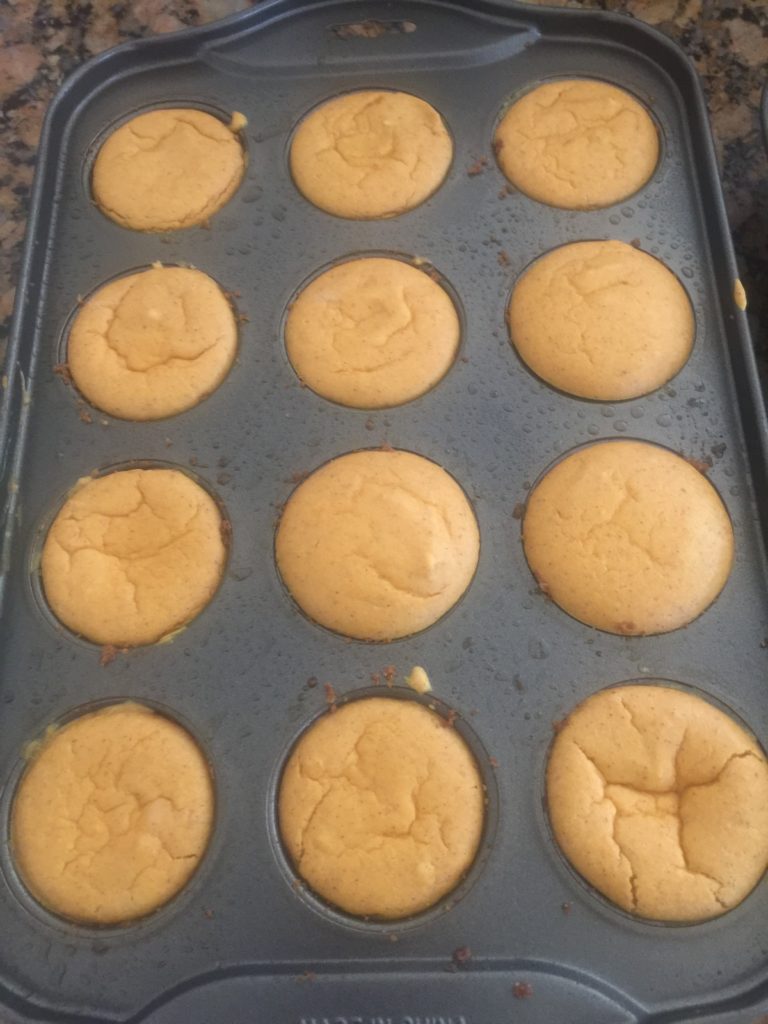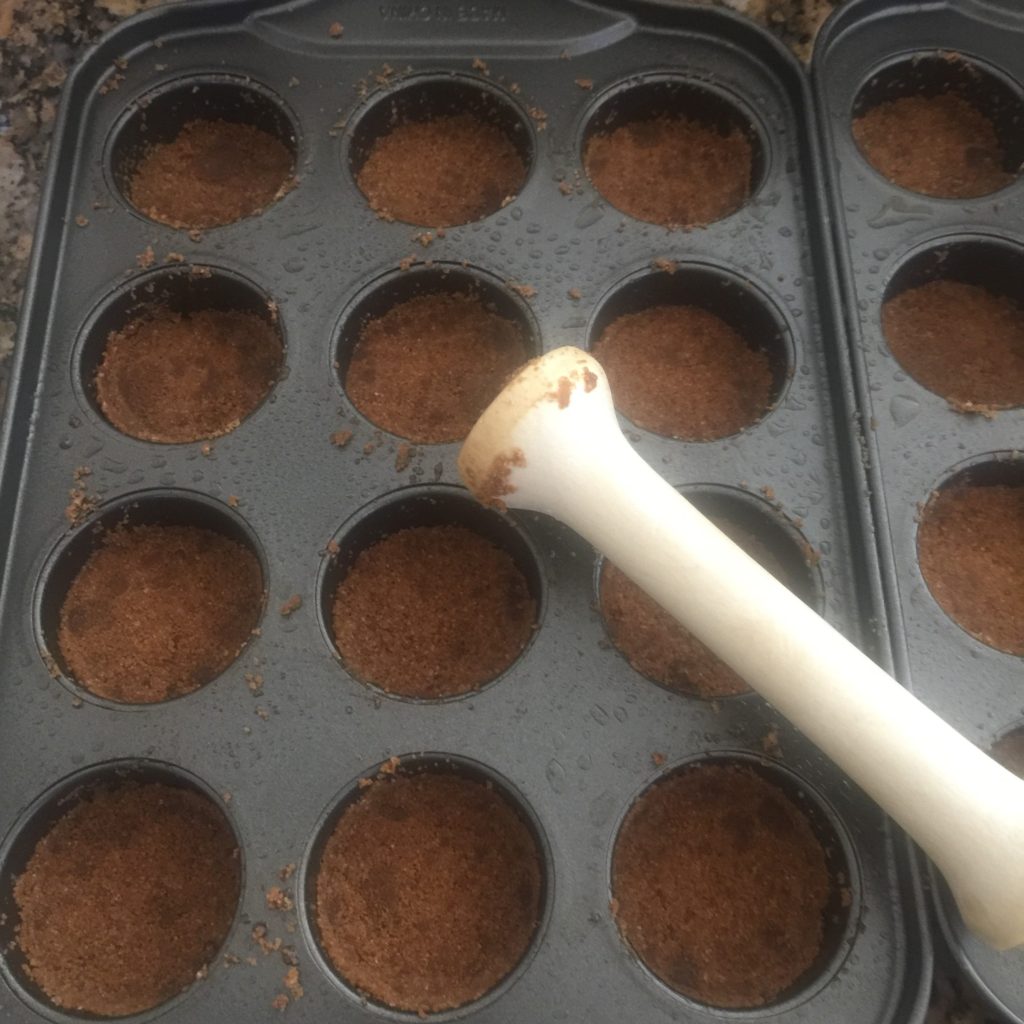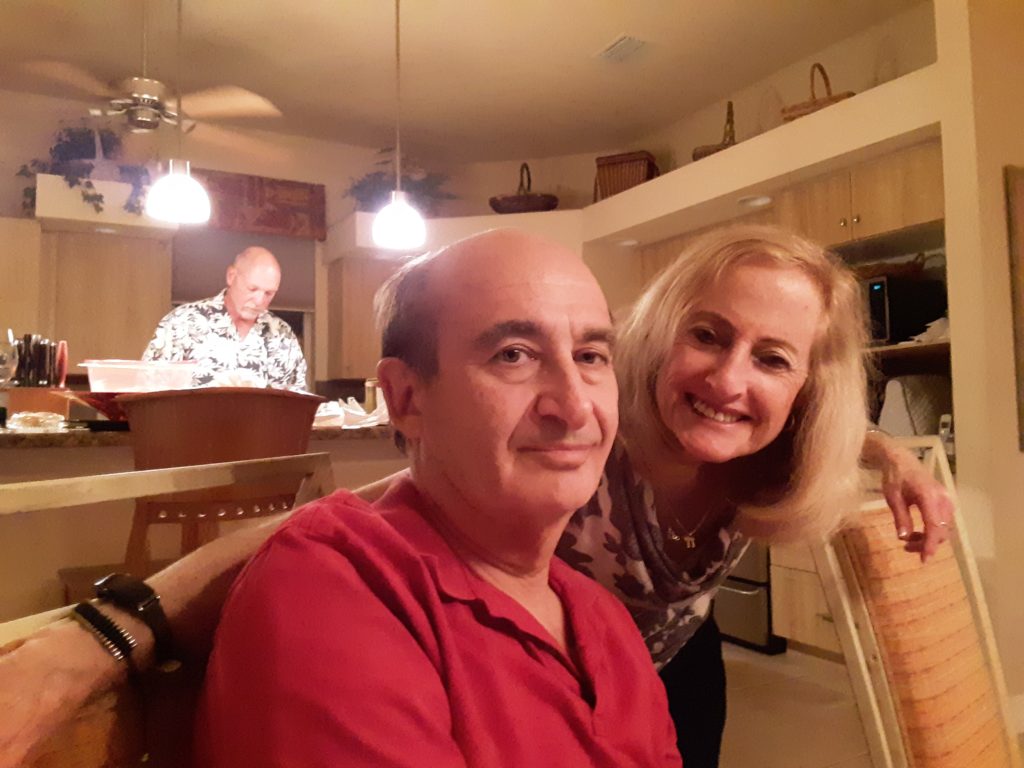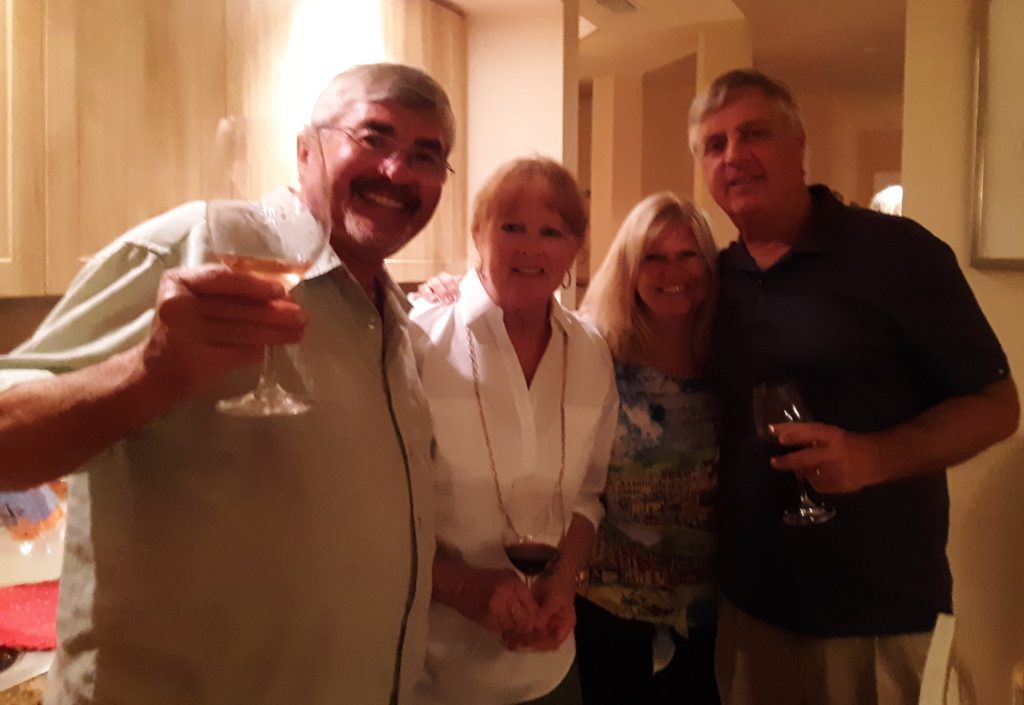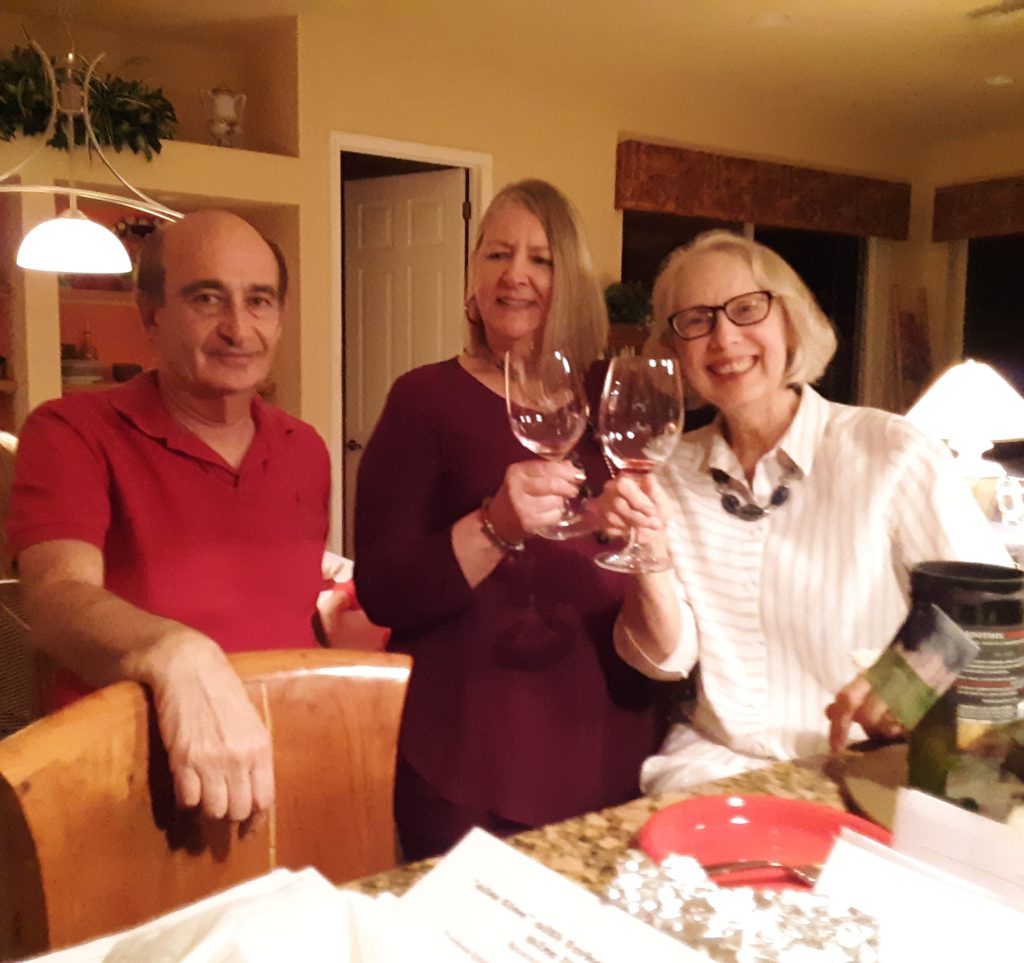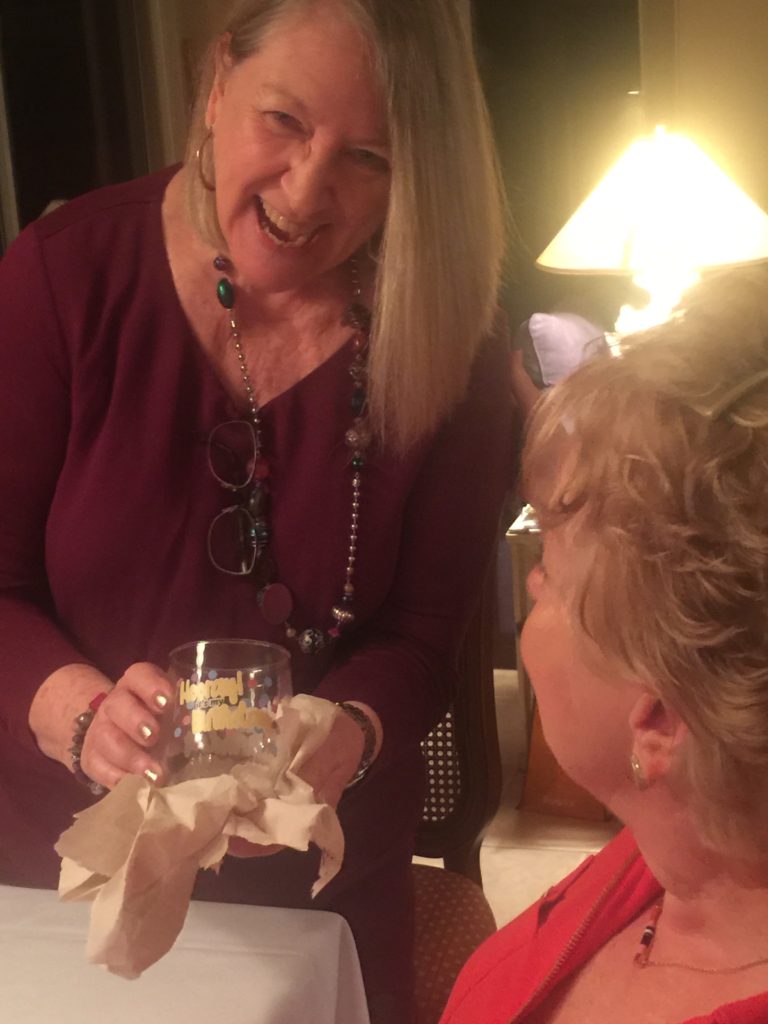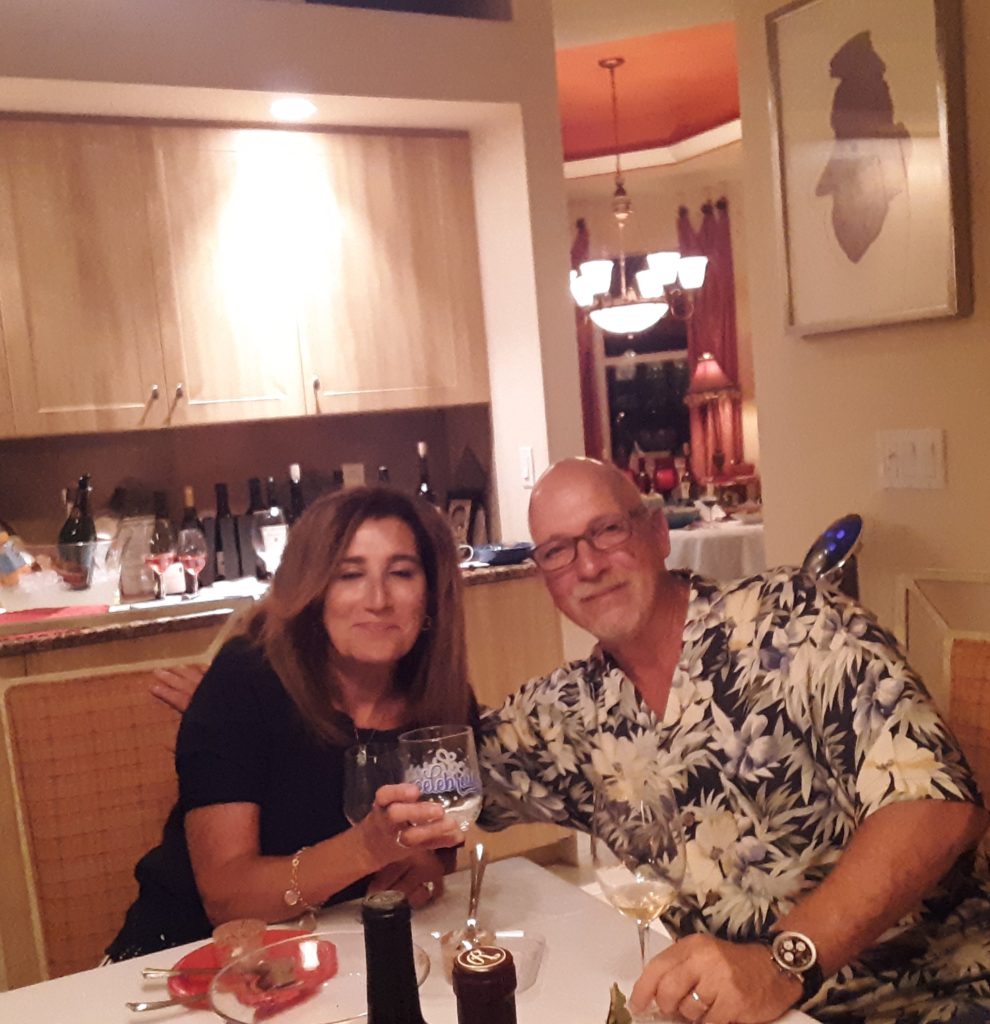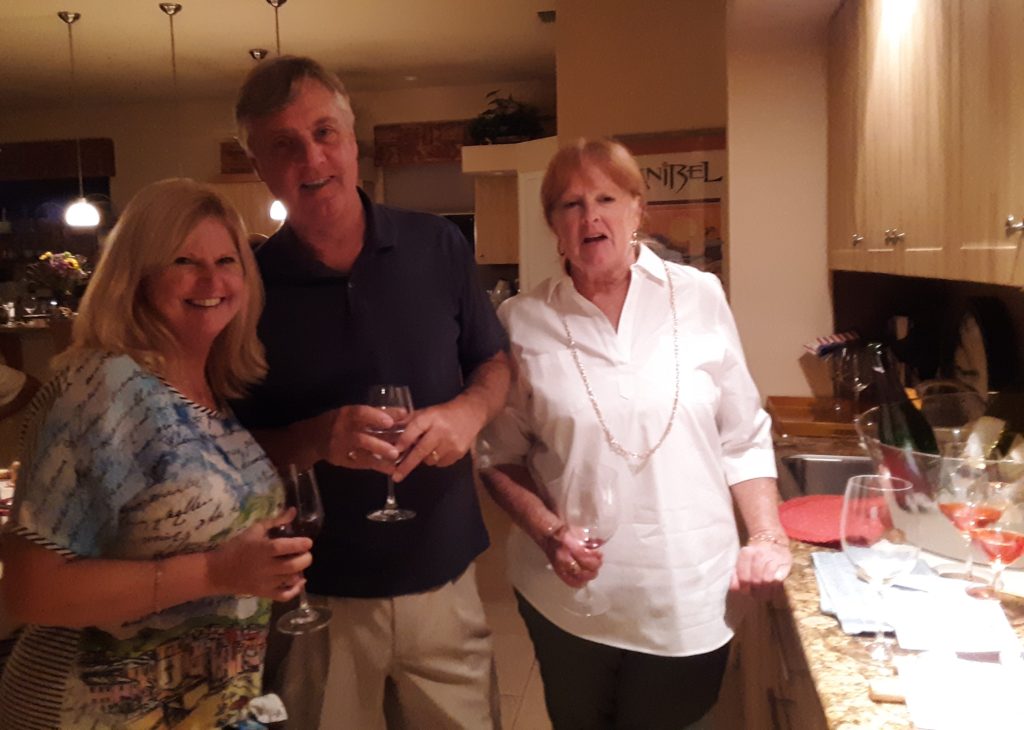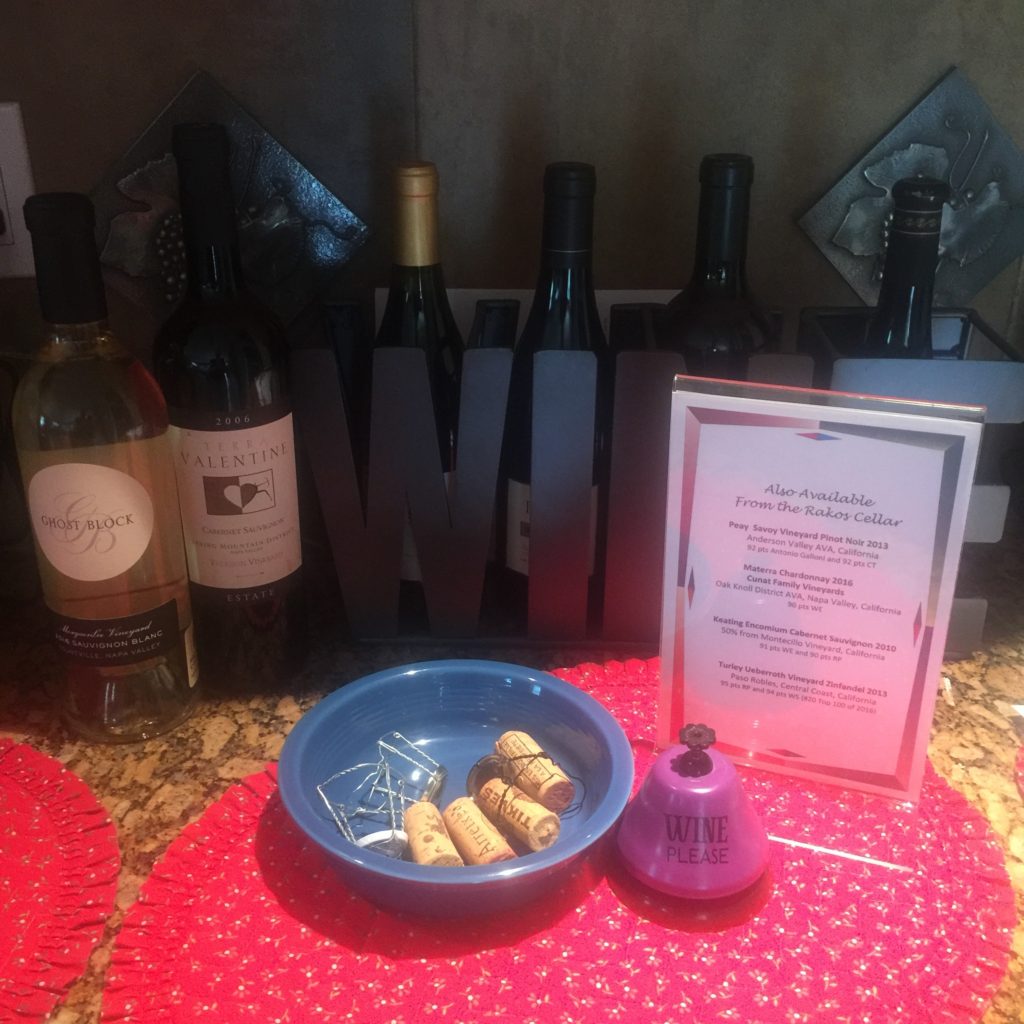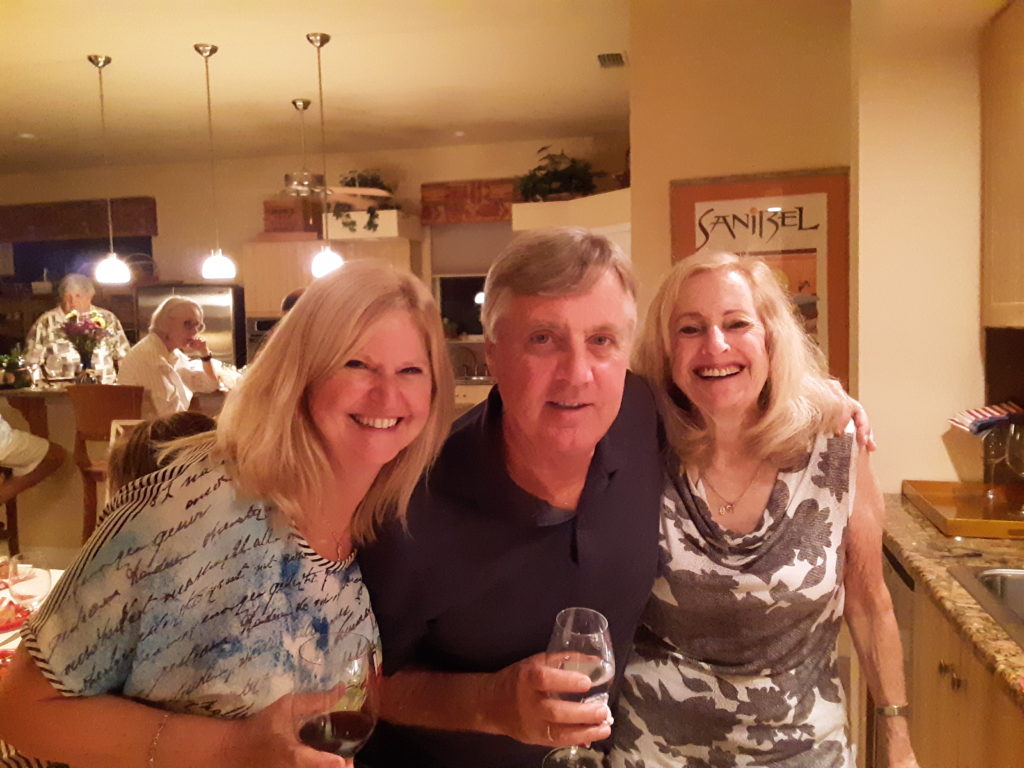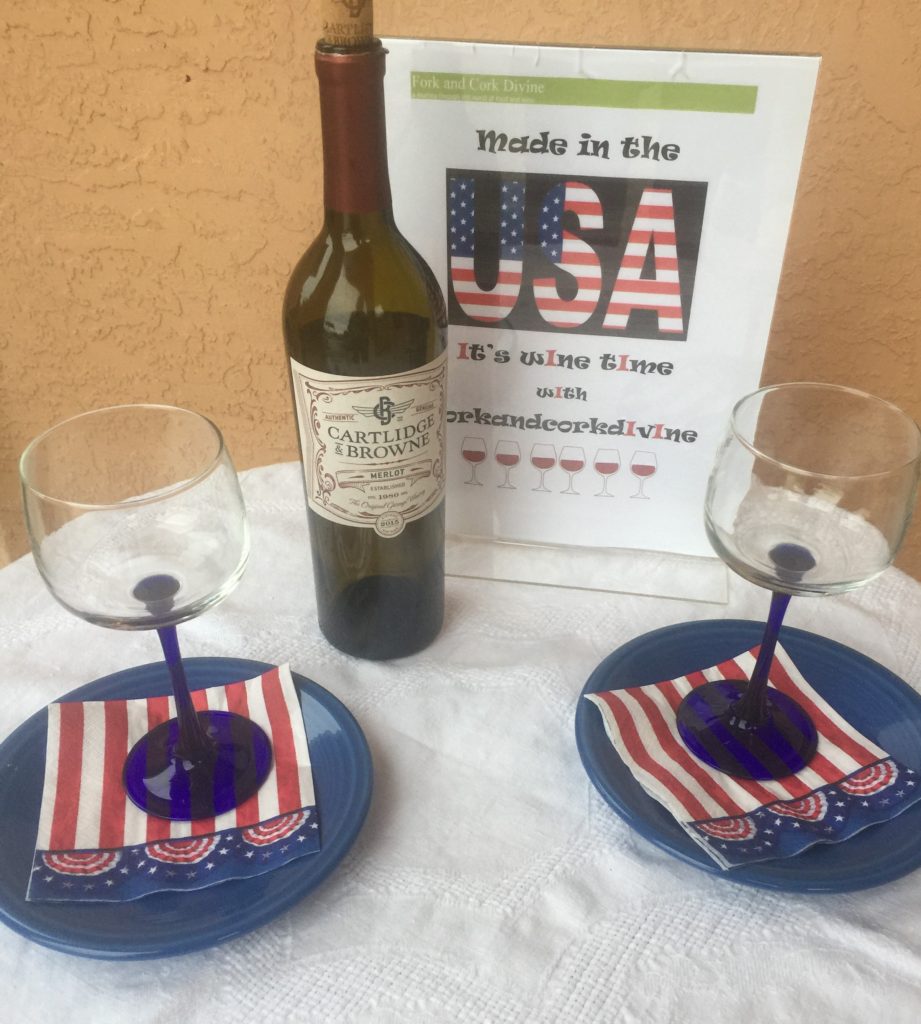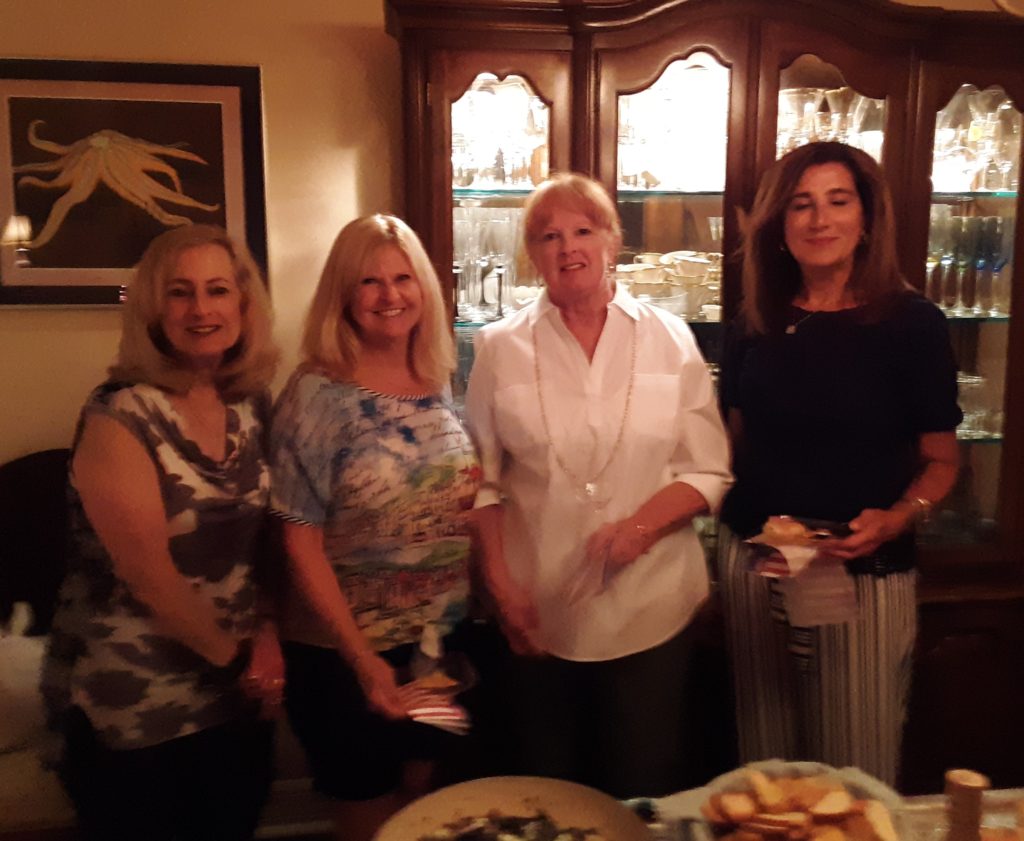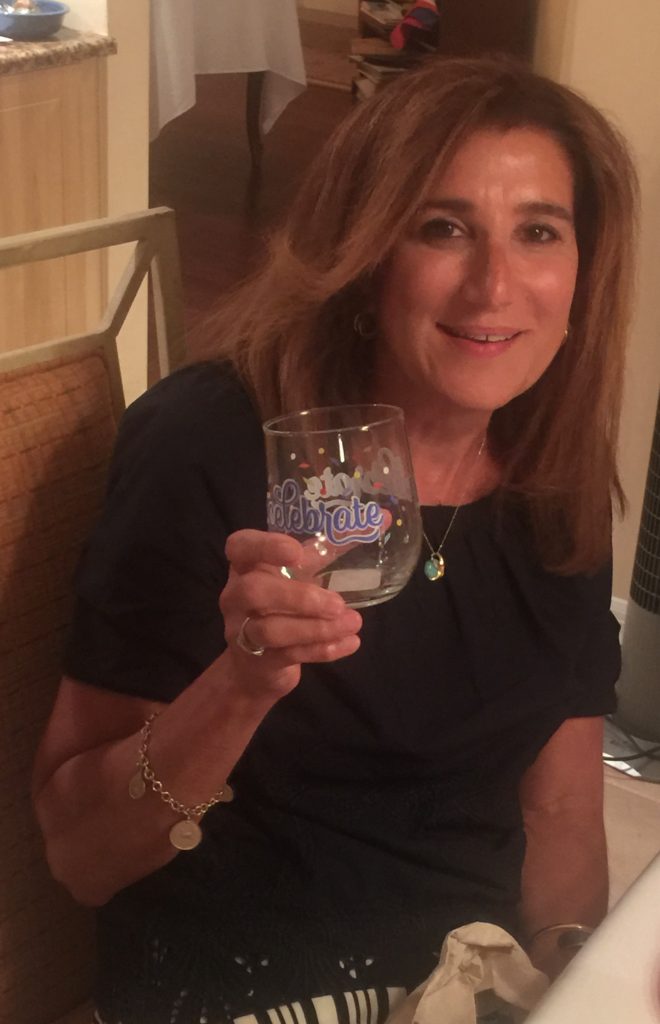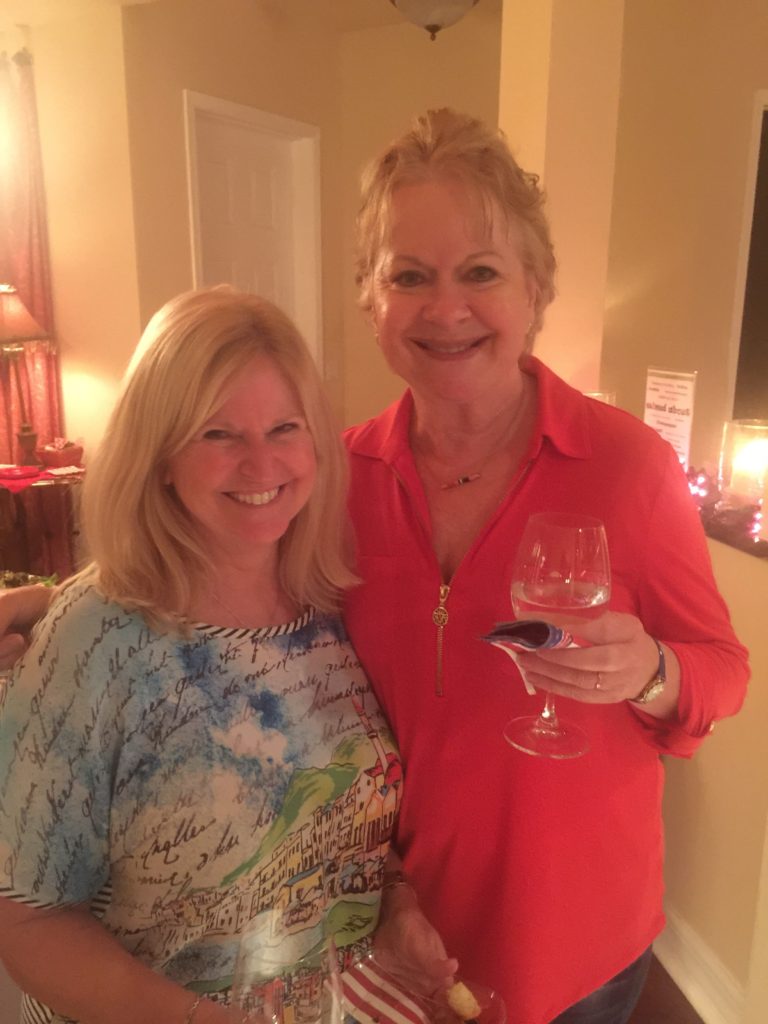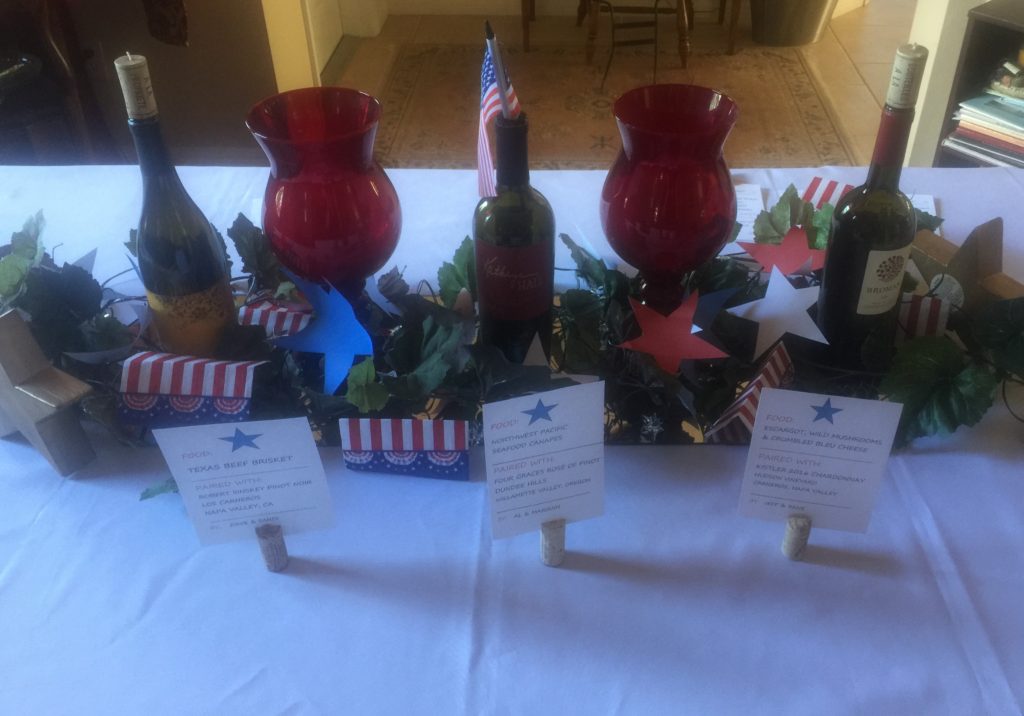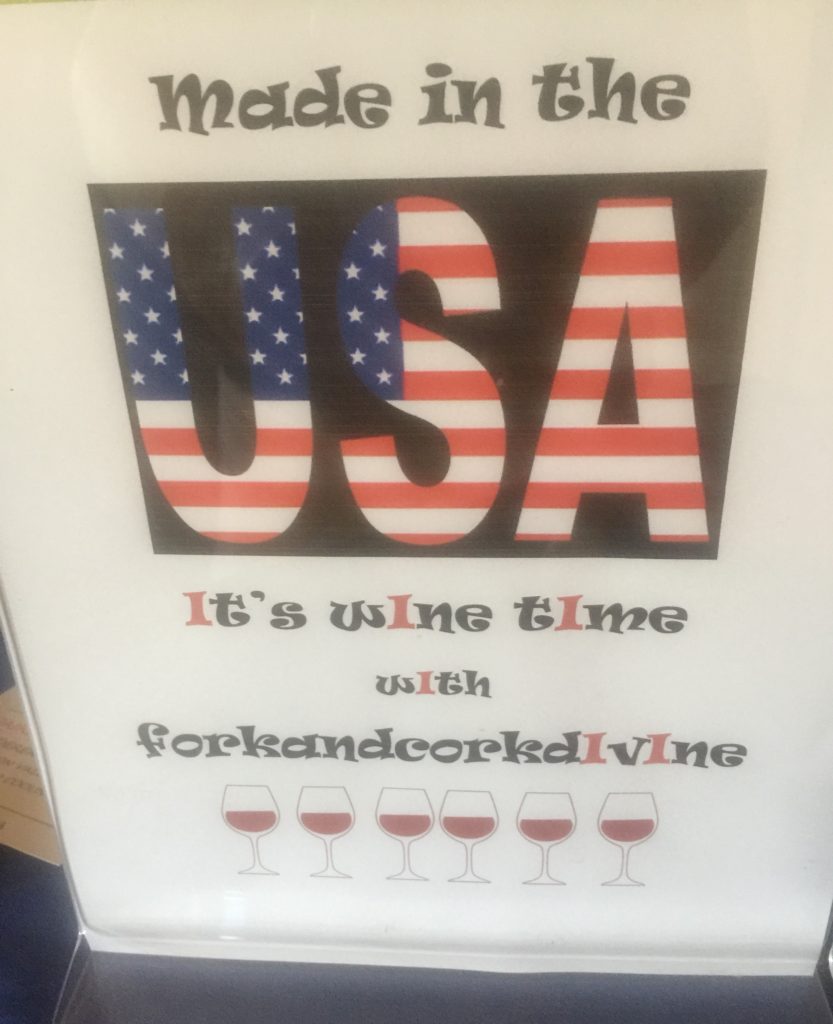
It was all about the good old USA when a few serious lovers of wine and food gathered together for our most recent forkandcorkdivine “wIne tIme” event. The theme was to be a celebration of wine “Made in the USA”. Our guests were charged with bringing a wine made in the United States that they knew we would all enjoy and/or should be introduced to. And of course, being the foodies that we are, there had to be a delicious culinary treat prepared and presented to go along with that special bottle of wine. Before I show you the pictures and tell you about the wines and their food pairings from our very successful evening, this would not be a forkandcorkdivine post if I did not give you some wine information tidbits!
A VERY quick overview of winemaking in the USA
There are over 10,000 wineries in these fifty United States of America, and wine is made in every one of them. The USA is not new to winemaking – wine has been made in America for over 300 years – but compared to Europe and parts of the world much further east like the country of Georgia, where wine can be traced back to 6000 BC, 300 years is just the blink of an eye. Now United States ranks fourth in the wine producing countries of the world, and three of the top wine producing companies in the world are from the United States.
We Americans should be pretty proud of our wines. After all, didn’t our California wine edge out the French wine in that very famous 1976 Judgment of Paris blind tasting wine event? Just 43 years later in 2019 California has over 4500 wineries (according to Statista.com) and produces 80-90% of our US wine. From the cult classic and unbelievably priced wines of Napa Valley like a bottle of Screaming Eagle that will set you back an average of $2500 for a new vintage or probably $7500 or more for an older vintage (that is if you can find it and I may be off a few $1000s), or “just” some Dalla Valle for around $500 down to a really great bottle of 2016 Cabernet Sauvignon from Joseph Phelps currently selling for $70 on wine.com. Of course, there are many excellent bottles of wine available in every price range. The fun part is searching them out which is what we winelovers “love” to do!
Did I say there is wine made in every state? You bet! The very first AVA, or American Viticultural Area which is similar to the geographical wine classification system in Europe, was recognized in Augusta, Missouri in 1980. There were 242 approved AVAs in the US as of July 2019. The largest AVA is the “Upper Mississippi River Valley AVA” which crosses four states – Minnesota, Iowa, Wisconsin and Illinois – with a whopping big 19 million acres! And then there is the southernmost AVA, the “Texas Hill Country AVA” with over 14,000 square miles. Texas wine has been steadily gaining in recognition; Texas now ranks number five in number of US wineries by state. Here is one that may surprise you –Hawaii has an appellation – in fact one of the commercial wineries is the “Volcano Winery” near the summit of the Kilauea Volcano which should really not come as a surprise. Hawaiian winemakers primarily make fruit wines like a pineapple sparkling wine. The principal grape in Hawaii is the Symphony grape, a cross of the vinifera varieties Muscat of Alexandria and Grenache Gris, that makes white wine with a slight spiciness and aromas of citrus, apricot and peach.
Nothing against pineapple sparkling wine from Hawaii or maybe a Muscadine or Scuppernong from the Southeastern US……in fact we may do a tasting of those one of these days??…..but I had a feeling that most of our winelover friends were more interested in bringing us some terrific wine made from Vitis vinifera grapes like Cabernet Sauvignon, Pinot Noir and Chardonnay. They did not disappoint! We drank some excellent examples of US sparkling blend, Sauvignon Blanc, Chardonnay, rosé of Pinot Noir, Pinot Noir, Merlot, Syrah, red Meritage blend and Cabernet Sauvignon. Now let’s reveal the wines and the pictures of the food pairings.
#1 Pairing: Roederer Estate Brut Sparkling
Salmon Horseradish Dill with Caviar Mousse Terrine
Domaine Chandon Creamy Blue Cheese Spread
Assorted Crackers
Roederer Estate Brut was the first sparkling wine produced by Champagne Louis Roederer of France, famous for their Cristal Champagne that would set us back $200 – $300 a bottle. We are so lucky to have our own Roederer right here in the USA where they have been making highly acclaimed sparkling wine in the Anderson Valley of Mendocino County, California since 1988. This wine landed at #27 on the Wine Spectator Top 100 of 2018 and I bought it for a mere $26. It’s made from 60% Chardonnay and 40% Pinot Noir grapes, and was crisp and elegant with complex pear, spice and hazelnut flavors such as promised in the tasting notes and I absolutely loved it!
The salmon mousse was light and elegant just like the Roederer and had a tiny bit of zip to it from the horseradish. You can make it from canned salmon but I prefer to poach fresh salmon filets, then crumble and puree with the rest of the ingredients. I’ve made a smaller size version before and put into a Le Creuset terrine but this time I used a loaf pan to make sure all of that goodness made it into the finished product. The caviar gets layered in the middle of the terrine, so that each slice gives you some of everything and looks beautiful! You can find the recipe on epicurious.com (Gourmet November 1997). It’s an oldie but a goodie that has showed up at my dinner and cocktail parties a number of times.
The Domaine Chandon cheese spread is so simple to make and so delicious! It’s made of cream cheese, blue cheese, toasted walnuts, chives and parsley. You can google the name of the recipe and up it pops. Just remember to set it out at room temperature before you plan to serve it to allow for softening up. Sorry – I missed my photo op before the guests dug into it.
#2 Pairing: Ghost Block Morgaen Lee Vineyard Sauvignon Blanc 2016
Chicken Sliders with Mozzarella Cheese and Pesto
Ghost Block is one of three brands owned by the Pelissa family in Napa Valley. They have been owning and farming vineyards there for over 100 years. All 635 acres of grapes are 100% organically farmed. The other two brands are Oakville Winery and Elizabeth Rose. Each one has it’s own winemaker, vineyard designation and identity. The Ghost Block story goes that back in the 1980s, a ghost was seen leaving the Yountville Pioneer Cemetery walking up the hillside through the vineyard. A local retired veteran told Andy Hoxsey, the current Ghost Block owner, that it was the ghost of George C. Yount, the founder of Yountville who also planted the first grapevine in Napa Valley in 1839. The next morning Andy went to trademark the name “Ghost Block”, so if you are in the area be on the lookout for the ghost of George C. Yount!
The Ghost Block wines are made from four of the family’s single vineyards which include Ghost Block and Morgaen Lee. The winemaker Kristi Koford made this excellent example of a Napa Valley Sauvignon Blanc from the Morgaen Lee Vineyard. The grapes were 40% whole cluster pressed, barrel fermented and aged sur lie for 7 months in once used barrels; then 60% soaked on the skins for 12 hours before pressing and cold fermenting in stainless steel. The wine was aromatic (think stone fruit like white peaches and yellow melons) with a lively acidity very similar to a Sancerre. We all enjoyed this wine.
Our Sauvignon Blanc pairing was Pesto Mozzarella Chicken Sliders made by Chuck. He shredded a local supermarket rotisserie chicken and layered it on slider buns that had been spread with mayonnaise, then added some basil pesto and sliced mozzarella cheese. Brush a little more pesto and melted butter on the tops of the buns and bake till cheese is melty. Easy and a really good pairing with the wine. No ghosts appeared as the sliders disappeared!
#3 Pairing: Kistler Hudson Vineyard Chardonnay 2016
Escargot and Wild Mushrooms with Crumbled Blue Cheese
Kistler wine………..It almost needs no comments!! Kistler Vineyards is dedicated to making world class site specific Chardonnay and Pinot Noir. Kistler was founded in 1978 in the Russian River Valley of Sonoma and produced just 3,500 cases of wine in their first vintage in 1979. They now produce about 35,000 cases a year. They make their wines using classic Burgundian techniques. They use native yeasts, French oak barrels, and bottle unfiltered and unfined.
The Chardonnay is barrel fermented in underground gravel floor barrel rooms and aged sur lie in the same barrels for 11 to 18 months. Each of their 11 vineyard designate Chardonnays have different characteristics unique to their particular vineyard. Kistler has been making Chardonnay from Hudson Vineyard since 1994. The soil there is a mix of volcanic and marine sediment which makes an elegant wine often with tones of iodine and minerality. Tasting experts told us to expect notes of lemon, pears, green guava, apple blossom, crushed rocks and salty oyster shell characteristics. It receives ratings in the mid to high 90s every year, and we were so happy that Jeff and Rene shared it with us.
A bottle of Kistler demands something sophisticated and that is just what Jeff prepared for us as their pairing. He sauteed escargot – minus their little shells – with wild and exotic mushrooms in a really tasty sauce and served it with crumbled blue cheese on the top. What a dish!!
#4 Pairing: Four Graces Rosé of Pinot Willamette Valley Oregon 2018
Northwest Seafood Canapes
Every great tasting line-up deserves a rosé and we had a great one. The Four Graces is a winery in the Dundee Hills of the Willamette Valley in Oregon founded in 2003 by the Black family. The Blacks named the winery after their four daughters and farmed sustainably to make rich, elegant, delicious and complex wines. In 2005 they bought the Doe Ridge property in Yamhill Carlton and turned the vineyard into one of the largest experiments of its kind with 40 acres farmed sustainably through the LIVE (low impact viticulture and enology) program. Since then Bill Foley has purchased Four Graces and the winery is dedicated to producing world-class wines.
The 2018 Four Graces Rosé of Pinot was made from 100% Pinot Noir aged 4 months in 50% French oak and 50% stainless steel producing a light pink color with a touch of rouge. The delicate aromas of Montmorency cherry, wild strawberry, Meyer lemon and and tiny bit of creme fraiche made this one award winning tasty Rosé. In fact it was a double gold medal winner in the Best of the Northwest 2019 Wine Competition and a welcome addition to our Southwest Florida wine tasting.
Al and Mariann paired their wine with a seafood canape featuring a horseradish spread on brioche bread topped with smoked white fish, smoked salmon, slice of cucumber, then garnished with red onion and dill. It was a match made with grace in heaven.
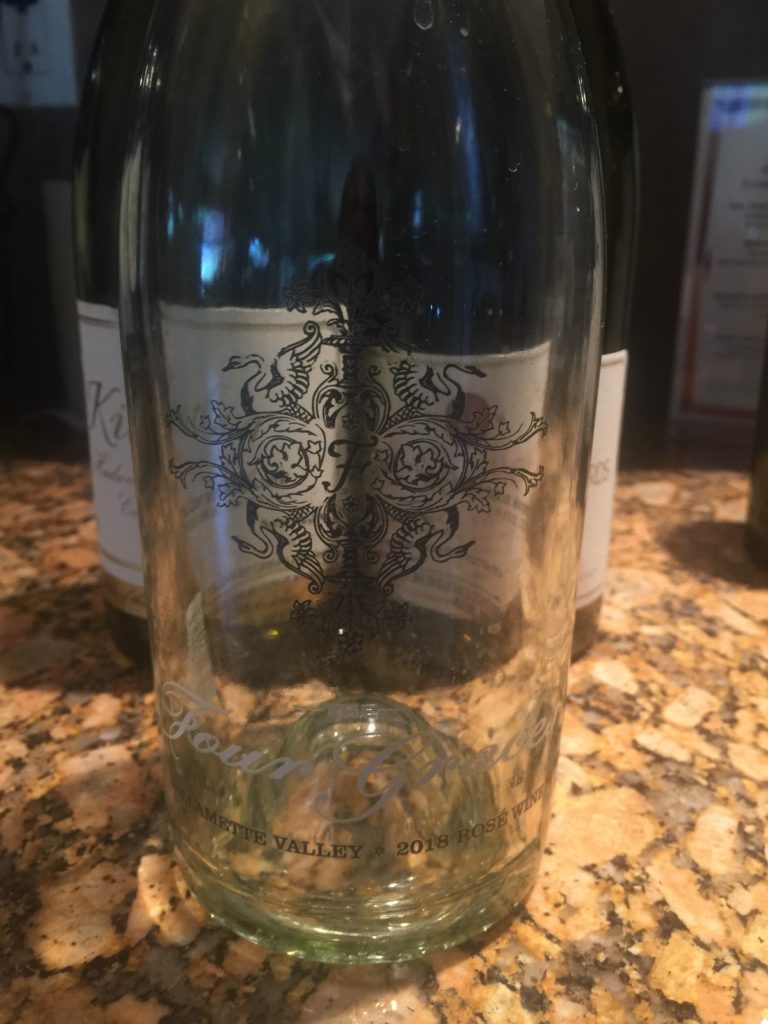
It was so much “prettier” with the wine in it! 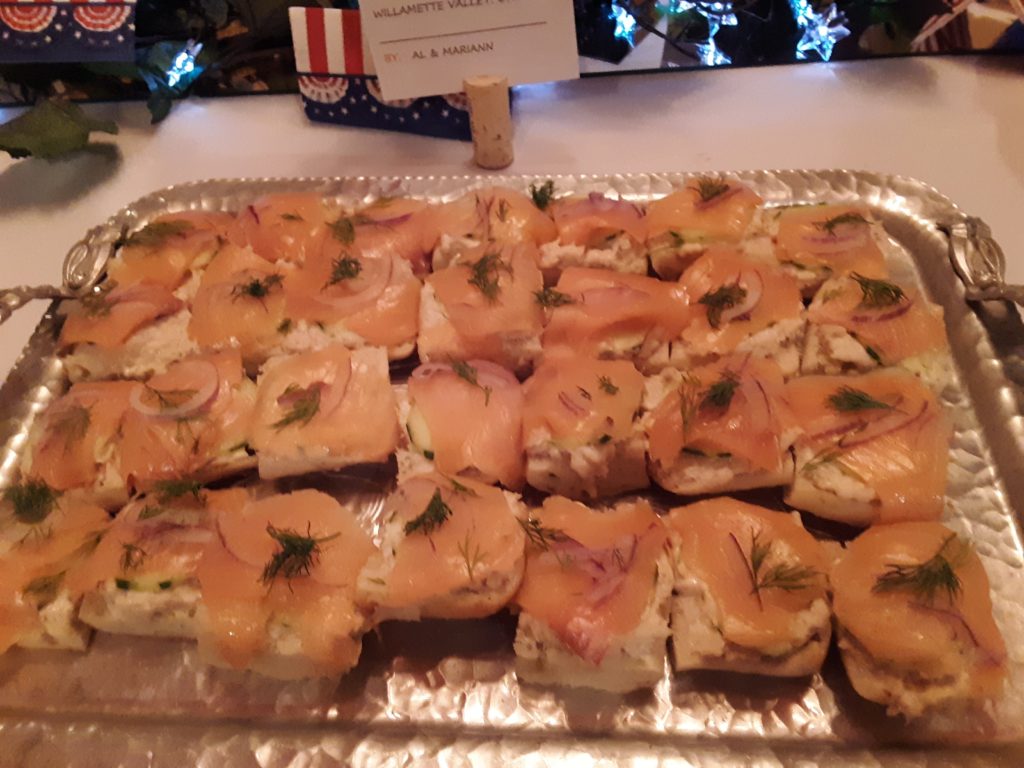
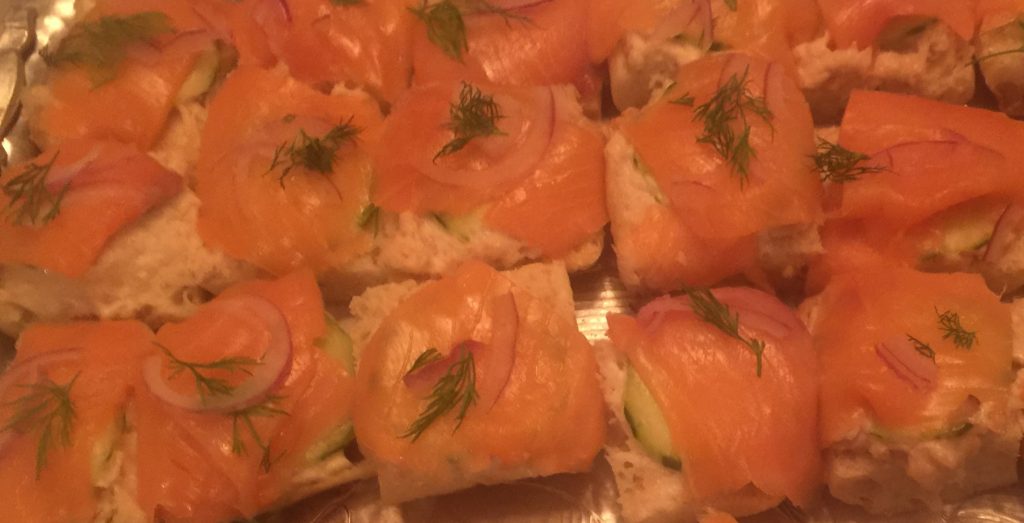
#5 Pairing: Robert Sinskey Pinot Noir Carneros Napa Valley 2014
Texas Style Beef Brisket
Robert Sinskey Vineyards has grown from 15 acres of vineyards to 200 acres of prime vineyards in five Carneros locations and just under 5 acres next to the winery which is located on the Silverado Trail in the Stags Leap District of Napa Valley. It’s a 100% organic and biodynamic certified winery known for its reds. Their goal is to make “pure wines of character that pair well with cuisine.” The Pinot Noirs are silky, elegant and complex. They also make Cabernets, some Bordeaux-style reds, Merlot, Chardonnay and several other varieties. One of the 2017 fires burned to within several feet of their hospitality center, but remarkably all that was lost here was some vines and landscaping. Some of their neighbors were not as lucky!
The 2014 Robert Sinskey Pinot Noir from Carneros was made from 32 separately harvested and vinified lots from all 5 of their Carneros vineyards. It was cave aged 10 months in French oak, 30% new barrels, and 308 barrels were produced. Tasting notes told us to expect lavender, rose and rosemary with ripe strawberry, cranberry, red plum and cherries followed by clove and vanilla spice from the French oak barrels. There was sage and forest floor on the finish. I have always enjoyed Sinskey Pinot Noir and this one was no exception. Good choice in Pinots, Dave and Sandi!
Dave always brings some special culinary techniques to our wine and food pairings, and we are always wowed by his efforts and tasty food. To go with that wonderful Sinskey Pinot, he made a Texas-style beef brisket that was smoked and then cooked in sous vide. That brisket was full of flavor. You should have been a chef, Dave!
#6 Pairing: Textbook Merlot Napa Valley 2017
Veal Blanquette
TEXTBOOK specializes in growing and crafting small lots of Cabernet Sauvignon, Merlot and Chardonnay grown in the Oakville, Yountville and Los Carneros appellations of Napa Valley. Their grapes are hand-picked, hand-sorted and carefully handled throughout the entire winemaking process. TEXTBOOK was founded in Napa in 2004 by Jonathan and Susan Pey who have a European background that led them to their “bold-yet-balanced” winemaking style. They have some excellent vineyard sources; for example the primary vineyard for their “Mise en Place” Cabernet Sauvignon is a site in the Oakville district next door to Screaming Eagle. That puts them in some outstanding company!
The 2017 Merlot was made from 100% Napa Valley grapes (90% Oak Knoll and 10% Oakville Districts) and is 90% Merlot and 10% Cabernet Sauvignon. Both sites are sustainably farmed. The must was gently pressed in French oak barriques. Barrels were 100% French – 33% new. The wine was in the barrels for 12 months with two rackings and one egg white fining. The finished product was light bodied with tart cherry, plum and spice.
Christian is our very own Culinary School trained French chef who brought us a simmering pot of his delectable veal blanquette. Those bites of veal and vegetables in an exquisite cream sauce almost melted in your mouth. And it paired perfectly with the TEXTBOOK Merlot. Thanks, Chef and Mari. If you would like to taste it, check them out on Sanibel at their Bleu Rendezvous French Bistro.
#7 Tensley Colson Canyon Vineyard Syrah Santa Barbara 2016
Spiced Lamb Meatballs with Walnut Romesco Sauce
Joey Tensley started out working as a “cellar rat” for Fess Parker Winery in Santa Barbara County back in 1993. He moved on to Babcock as assistant winemaker and really came to appreciate the uniqueness of grape growing in Santa Barbara County. He came to love Rhone varietals while making wine at Beckmen and decided to produce only Rhone varietals sourced only from Santa Barbara County. Now he and his wife have a tasting room in Los Olivos and their Colson Canyon Syrahs have won a number of awards. Joey also produces “Fundamental Wines” that are priced just under $20 a bottle that have received great ratings from Wine Enthusiast and Wine Spectator.
Tensley now owns Colson Canyon Vineyards and the Syrah has received many accolades including a Food and Wine “Top Syrah in America over $20” in 2008, 99 points from Robert Parker for the 2008 Anniversary Series Colson Canyon Syrah, and a #17 of the Top 100 Wines from Wine Spectator. They still get those great scores – 97 and 94 points for the 2016 – and we Southwest Florida winelovers get that! We got to share a 2016 from Joe and Diane’s wine collection. According to Joey, it’s floral with smoky meat qualities, dark fruits and chocolates and elegance. It had that garrigue and cracked pepper that we love about Syrah. We will be looking forward to more Tensley Syrahs. Santa Barbara County Syrahs provide an outstanding Rhone varietal experience.
Diane paired up that peppery Syrah with Spiced Lamb Meatballs full of tasty seasoning like coriander, cumin and assorted pepper. To compliment the meatballs, there was a Walnut Romesco Sauce for dipping. Romesco Sauce originated in Catalonia, Spain and is typically bold and zippy. Diane’s sauce was all of that although she said she dialed down the “zip” a bit, but those toasted walnuts, roasted peppers and tomatoes, chipotle powder and other spices gave those meatballs exactly what they needed to enjoy with the Syrah.
#8 Rodney Strong Symmetry Red Meritage Blend Alexander Valley 2015
Korean Style Chicken Wings
The story of Rodney Strong Vineyards began over 55 years ago when Rod Strong, a ballet dancer, retired in Sonoma County to pursue his dream of winemaking. He started a winery and renamed it Rodney Strong Vineyards in 1980. The Klein family purchased it in 1989. Planting new rootstocks, new trellising and new varieties enabled them to focus on appellation-driven grapes such as Pinot Noir and Chardonnay from Sonoma’s cool areas, and Cabernet Sauvignon and Zinfandel from Alexander Valley – all Sonoma County.
Rodney Strong Vineyards was the 13th winery bonded in the newly discovered Sonoma County wine industry. Through the years Rodney Strong has earned their well deserved reputation for single vineyard and reserve wines including best-in-class Sonoma County varietal wines. One of their greatest awards came in 2013 when Wine Enthusiast named it as the “Wine Enthusiast American Winery of the Year” as part of their annual Wine Star Awards.
Rodney Strong uses sustainable practices to safeguard the region’s eco-system. Their solar energy system is one of the largest of any winery in the world. They were the first carbon neutral winery in Sonoma County.
Alexander Valley is best known for classic Bordeaux varietals that thrive there due to the well-drained rocky soil, warm climate, cooling ocean breezes and evening fog. The Cabernet Sauvignon, Merlot and Sauvignon Blanc are all high quality. Each of the Rodney Strong single-vineyard Cabernet Sauvignon releases comes from small Alexander Valley vineyard sites: Alexander’s Crown, Rockaway and Brothers. We had the privilege to enjoy a bottle of 2015 Symmetry Meritage Red Blend from Gary and Debbie’s collection. They have visited Rodney Strong many times, and we now know why it is one of their favorites. This official “Red Meritage” (rhymes with “heritage”) is a blend of exquisite Bordeaux varietals: Cabernet Sauvignon (73%), Merlot (10%), Petit Verdot (8%), Cabernet Franc (7%) and Malbec (2%). It spent 21 months in 56% new French oak barrels before going out into the world. The winemaker’s notes told us to expect luxurious aromas of red fruit, plum, vanilla, dusty oak and dried fruit which become silky layers of dark fruits, and baking spices on the palate. It was indeed elegant with refined tannins and a long, lingering finish. Wine Enthusiast rated it 90 points.
I need to mention that “Meritage” may not appear on a bottle of wine unless the wine meets the specifications of the Meritage Alliance which was founded in 1988 to promote blended wine from Napa Valley. The wine must be made from two of the permitted grapes which are based on the Bordeaux red wines of the past 200 years and typically based around Cabernet Sauvignon and Merlot. No single variety can make up more than 90% of the final blend. The winery must be a member of the Alliance which is primarily US dominated; however there are members from other countries including Argentina, Australia, Canada and France.
Debbie and Gary paired this wonderful Red Meritage with a recipe from Rodney Strong Vineyards: Korean Chicken Wings. The wings were lightly tossed in oil then baked. Then they got a bath of soy sauce and gochujang, some rice vinegar, honey, sesame oil, garlic and ginger. A light char after that and a few sesame seeds and scallions made them a perfect meritage of their own to go with the Symmetry. Who doesn’t love chicken wings……..especially served with a great wine!
#9 Terra Valentine Yverdon Vineyard Cabernet Sauvignon 2006
Roasted Eggplant, Zucchini and Crookneck Squash with Barley in a Pesto Dressing
Terra Valentine was founded in 1996 by the Wurtele family who bought the original winery and vineyard on Spring Mountain in the Mayacamas Mountains way up above St. Helena down in Napa Valley. They remodeled and added a state of the art winemaking facility, and hired Philip Baxter as their consulting winemaker. Baxter had worked at Charles Krug and Rutherford Hill Winery, so he came with great credentials. His son Sam Baxter later became the head winemaker and General Manager. I am delighted to say that Chuck and I visited this wonderful property back in 2010 before the Wurteles sold the winery and the Vyerdon Vineyard to Jackson Family Estates. They later sold the brand to Sam Baxter who eventually bought some other property on Spring Mountain which will be the new home of Terra Valentine estate.
Because I really enjoy the history of wine, the wine estates and the people who make it, it was time to pull our remaining bottle of Terra Valentine wine out of the cellar! It was a 2006 Cabernet Sauvignon from the Vyerdon Vineyard and every time I look at that bottle, I can still see those truly beautiful stained glass windows in the tasting room/winery at Terra Valentine high up on that mountain top! Visiting wineries, hearing their stories and tasting the wine where it was made is a major part of what being a winelover is all about! This bottle of history was made from 100% Cabernet Sauvignon and was just the third vintage from Vyerdon Vineyard. Robert Parker predicted it could age well for 15 plus years and he rated it 90 points. The tasting notes written way back then predicted a big wine with sage, cedar, black currants and blackberries with superb mouth-feel and exceptional balance. Much to my delight and our guests, the wine was still very well balanced and had those dark fruits and toasty earthy hints. It deserved the acclaim of a winery once 2,100 feet high up on a mountain over Napa Valley.
To pair with the very special Cabernet Sauvignon, I opted for a salad of grilled eggplant, zucchini and yellow squash blended together with plump pearl barley in a house-made walnut, basil and mint pesto. The roasting of the vegetables made them a good partner for the toasty oak notes of a Cabernet Sauvignon.
Dessert Buffet
Bite-Sized Meyer Lemon Tarts with Fresh Blueberries
Believe it or not, even after enjoying all of those wine and food pairings, our guests always seem to make room for a sweet bite of this or that. I like to present options and usually prepare a little dessert buffet. And good news for the pastry chef – all of these desserts can be prepared a day in advance. Since I wanted my little pies to be right out of the oven, I did prep ahead but baked off late in the day of service.
The Meyer lemon tree right outside my kitchen window mass produced beautiful lemons this year, so I am constantly challenged to find ways to use them.. These teeny little tarts were perfect! I used prepared pie pastry cut into 2 inch circles to make teeny little tart shells in my mini-muffin tins. I learned the ease of using a “tart tamper” which I must admit was totally unfamiliar with, but it made those little circles fit just right Yes, I could have improvised but that little wooden (or plastic) tool you see pictured below came with two different size “tampers” on it, and it became my new baking tool best friend! Then I filled the shells with lemon curd that I made from those wonderful lemons. Top with fresh fruit of your choice. Blueberries seemed right this time!
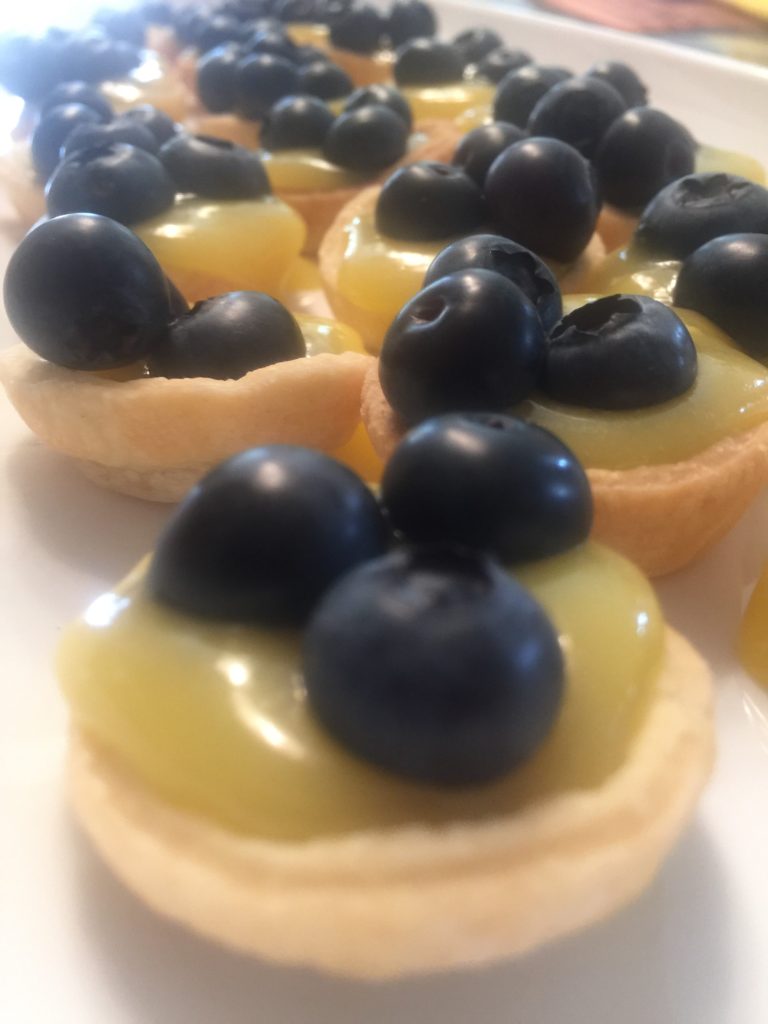
Brie and Fig Preserve Mini Pies
I was a bit worried about making something else with pie pastry, but the thought of Brie and fig preserves oozing out of fresh baked pie crust sounded delectable to me! And they were. You can probably find various versions of this recipe on line. That’s where I found mine and I will definitely tuck it away for future events. it took a bit of time, but was so simple. Roll out a prepared 9-inch pie pastry and cut out 3-inch circles. Put a little cube of Brie and a teaspoon of fig preserves on half of the circles and top them with the other half of the circles in which you have cut these nice Xs in to let the steam out. Assemble, crimp, egg wash and bake until they look absolutely beautiful, browned and glazed. WOW is all I can say to describe them!
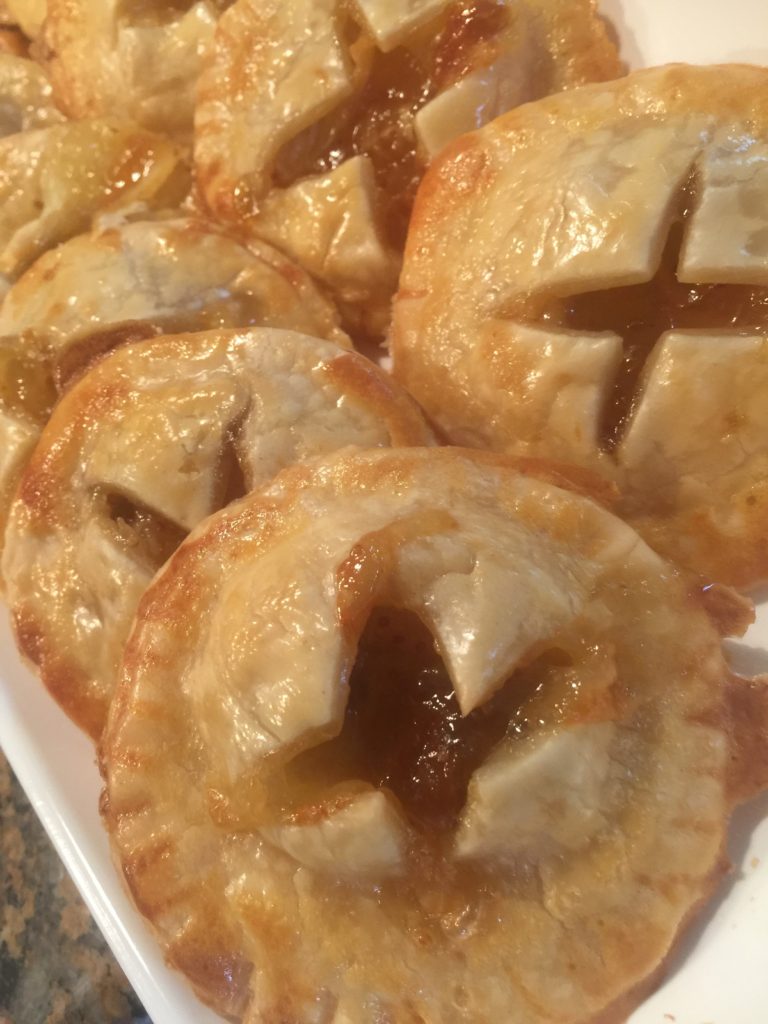
Mini Pumpkin Cheesecakes
Since I already had my new best friend, the “tart tamper”, I decided to splurge on and purchased mini-cheesecake pans. I’ve been a frequent cheesecake baker through the years and have numerous springform pans, but couldn’t imagine why I would want “mini”s. Now I know! These are fantastic little mini desserts when you want just a bite on your buffet. I filled my new mini pans with a gingersnap crust – after all it is fall and pumpkin season – tamped them all down with the other end of my tart tamper, and baked them off. Then I filled them with a pumpkin cheesecake filling made from cream cheese and pumpkin puree (do not use pie filling!) and baked till set. Chill the finished product and those little cheesecakes came out of the pans perfectly! Top them off just before serving with whipped cream.

Dark Chocolate Mousse
You must ALWAYS have something chocolate on a dessert buffet. That is the law! I made Bobby Flay’s recipe for Dark Chocolate Mousse and served them in small attractive clear plastic catering dessert bowls/cups. I’ve made this recipe before and it has not failed me yet. That light and fluffy mousse made of bittersweet chocolate, whipped heavy cream and whipped egg whites is like heaven in your mouth. Just don’t put the whipped cream garnish on until you are ready to put them on your buffet. Unfortunately I forgot to get better pictures of the finished product.
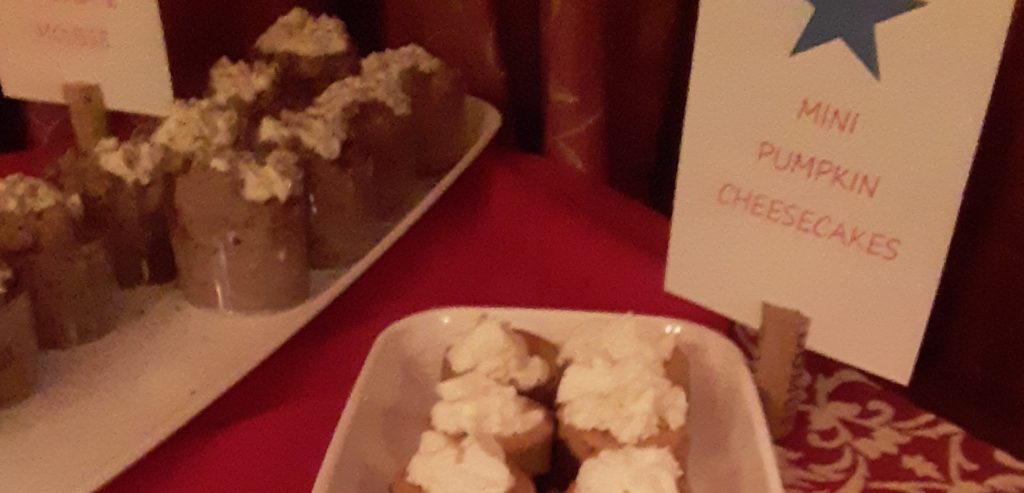
Guest Gallery
Enjoy a few of the pictures from our event. As usual, these events cannot happen without the assistance of our foodie winelover friends. Many thanks to everyone for thoughtfully selecting and sharing their wine, their culinary expertise, their service and cleanup assistance, and to Sandi for assisting with photography. Till the next “wIne tIme”. Cheers!
